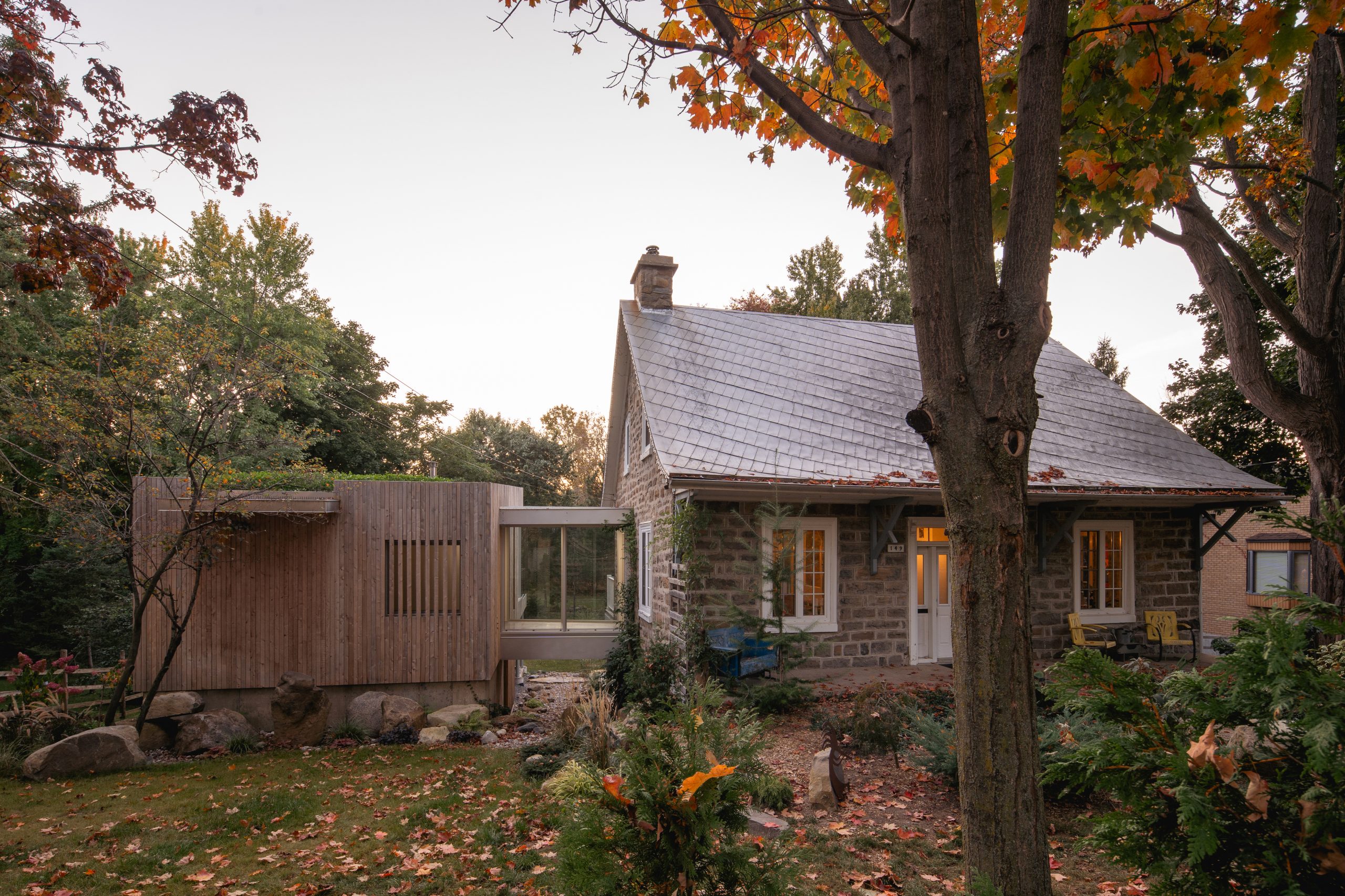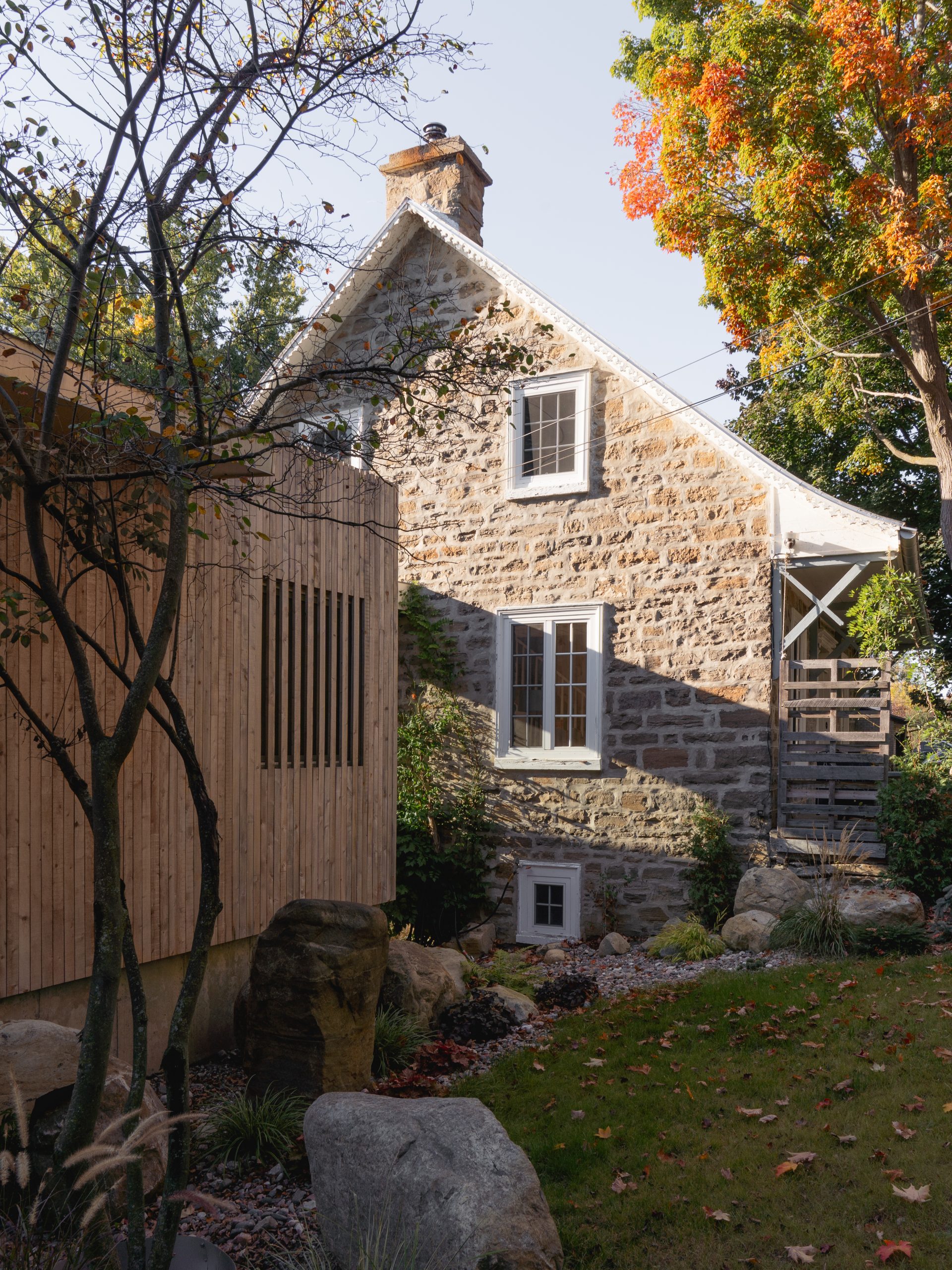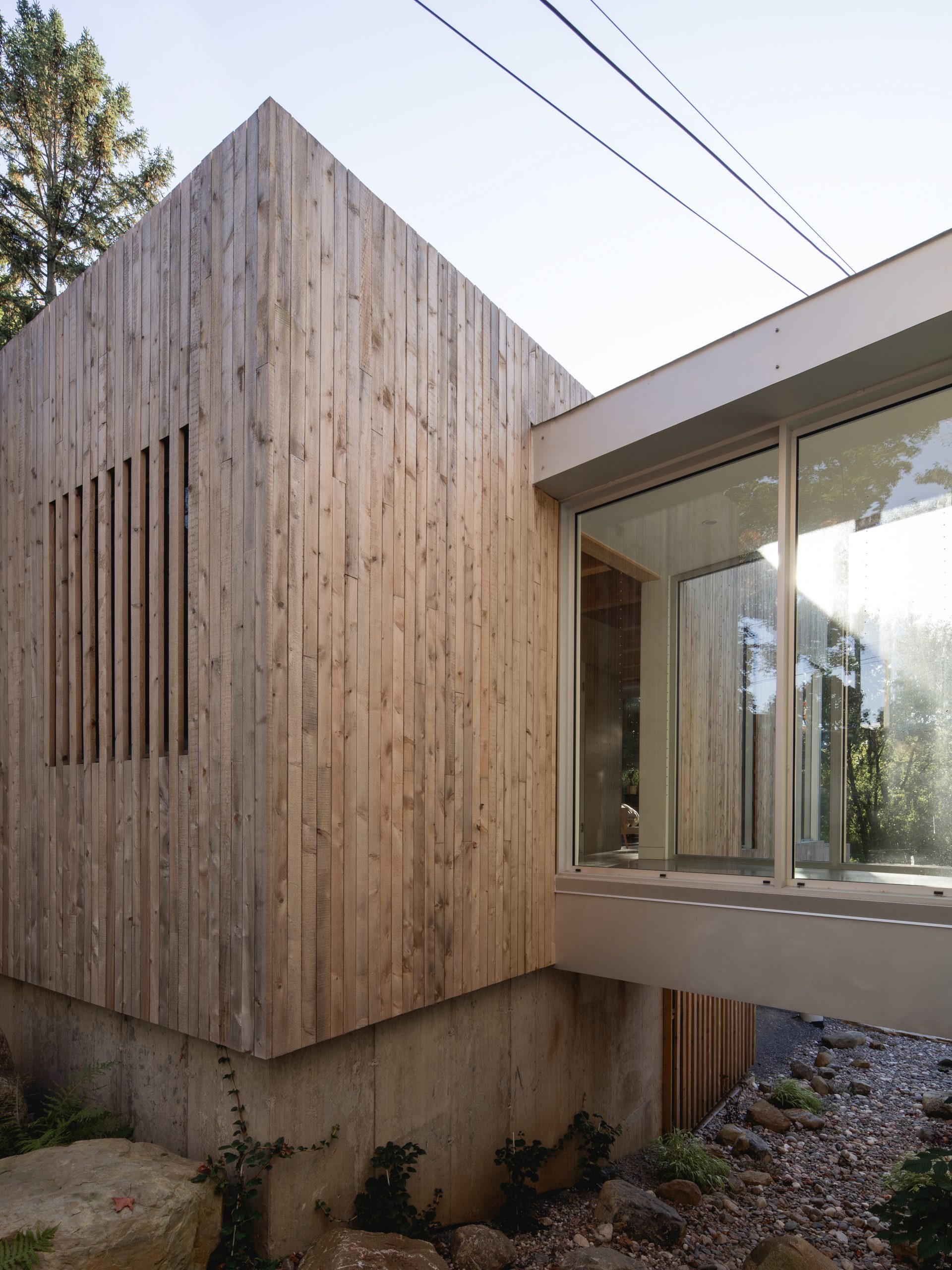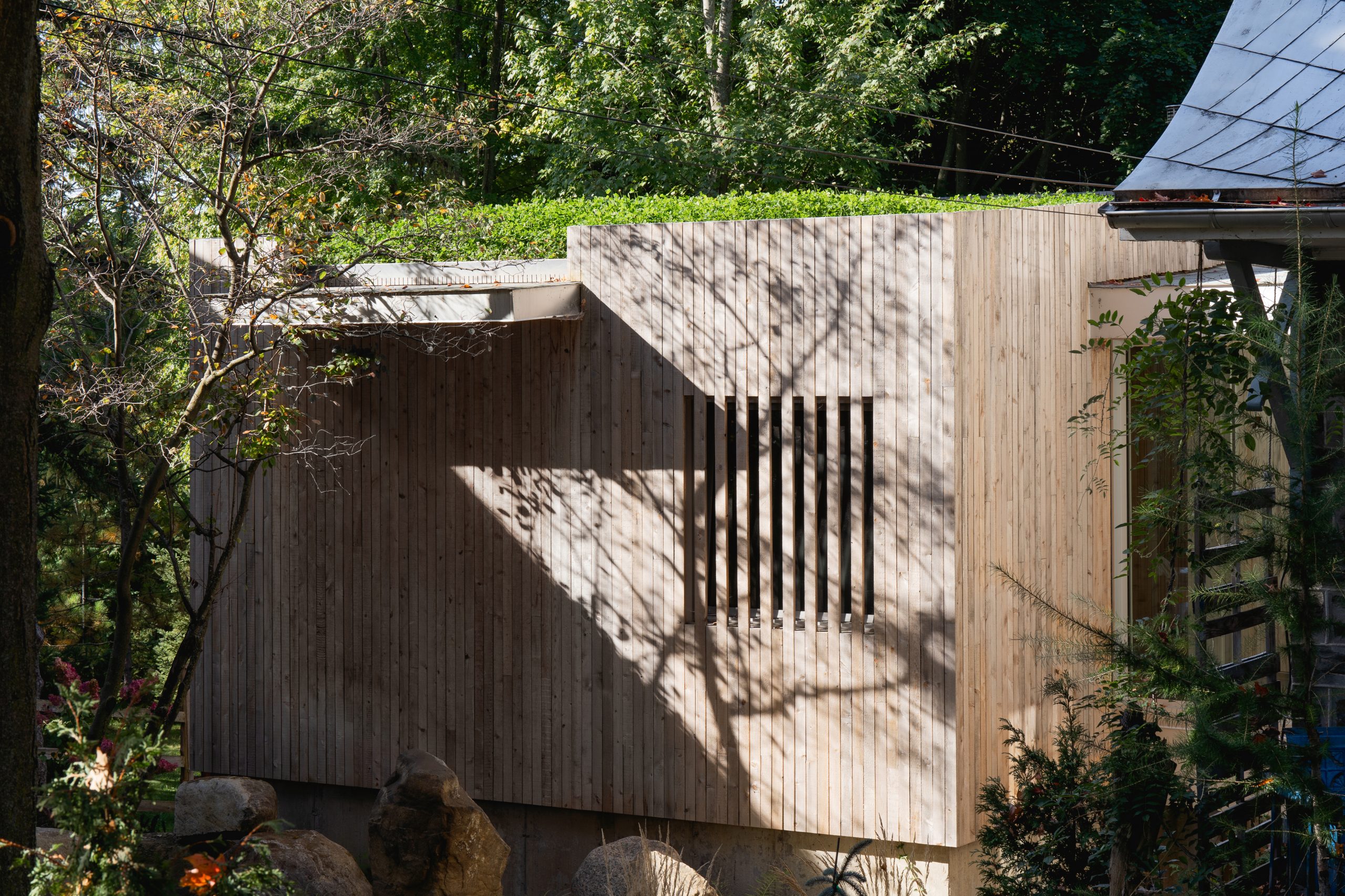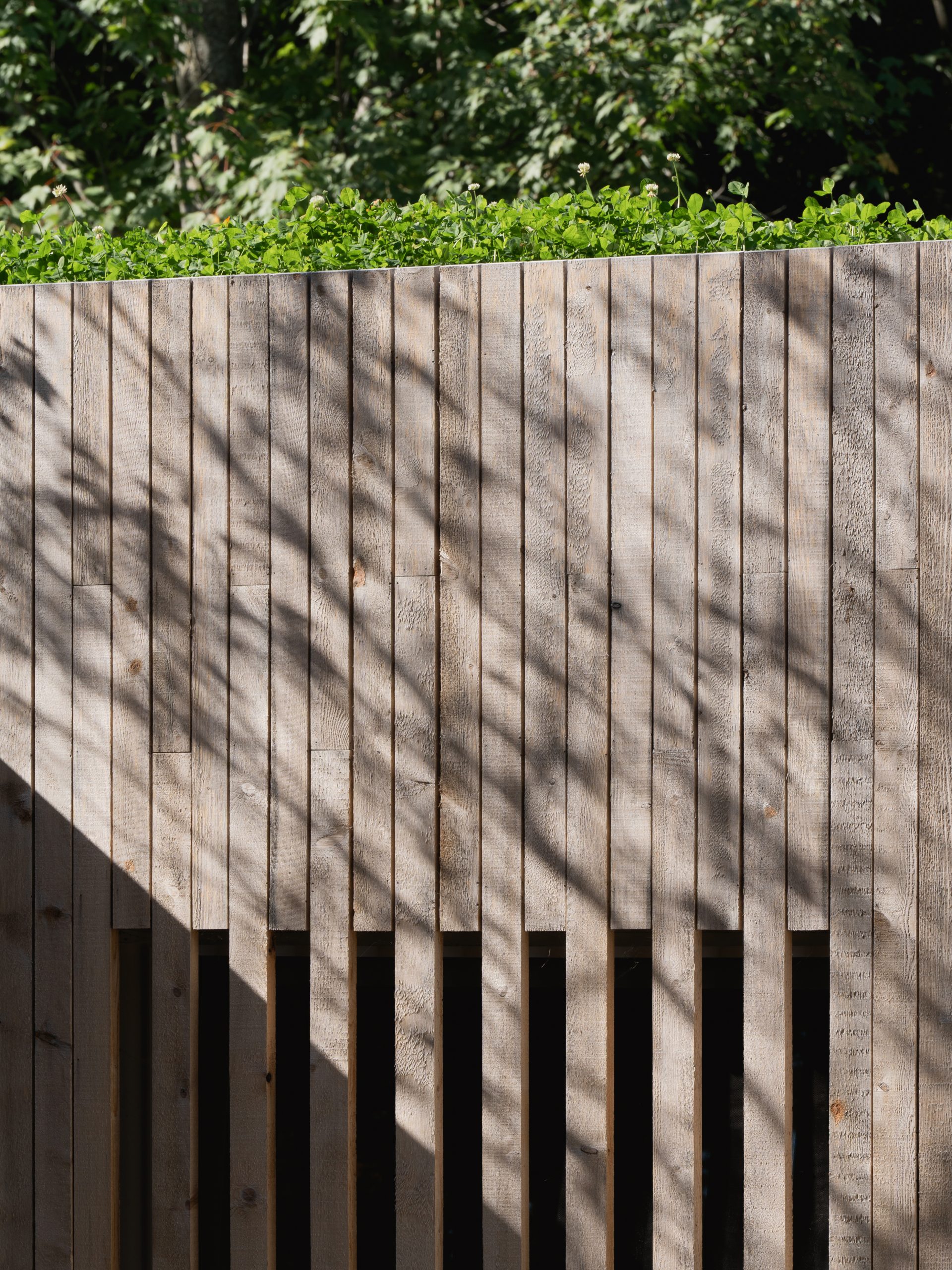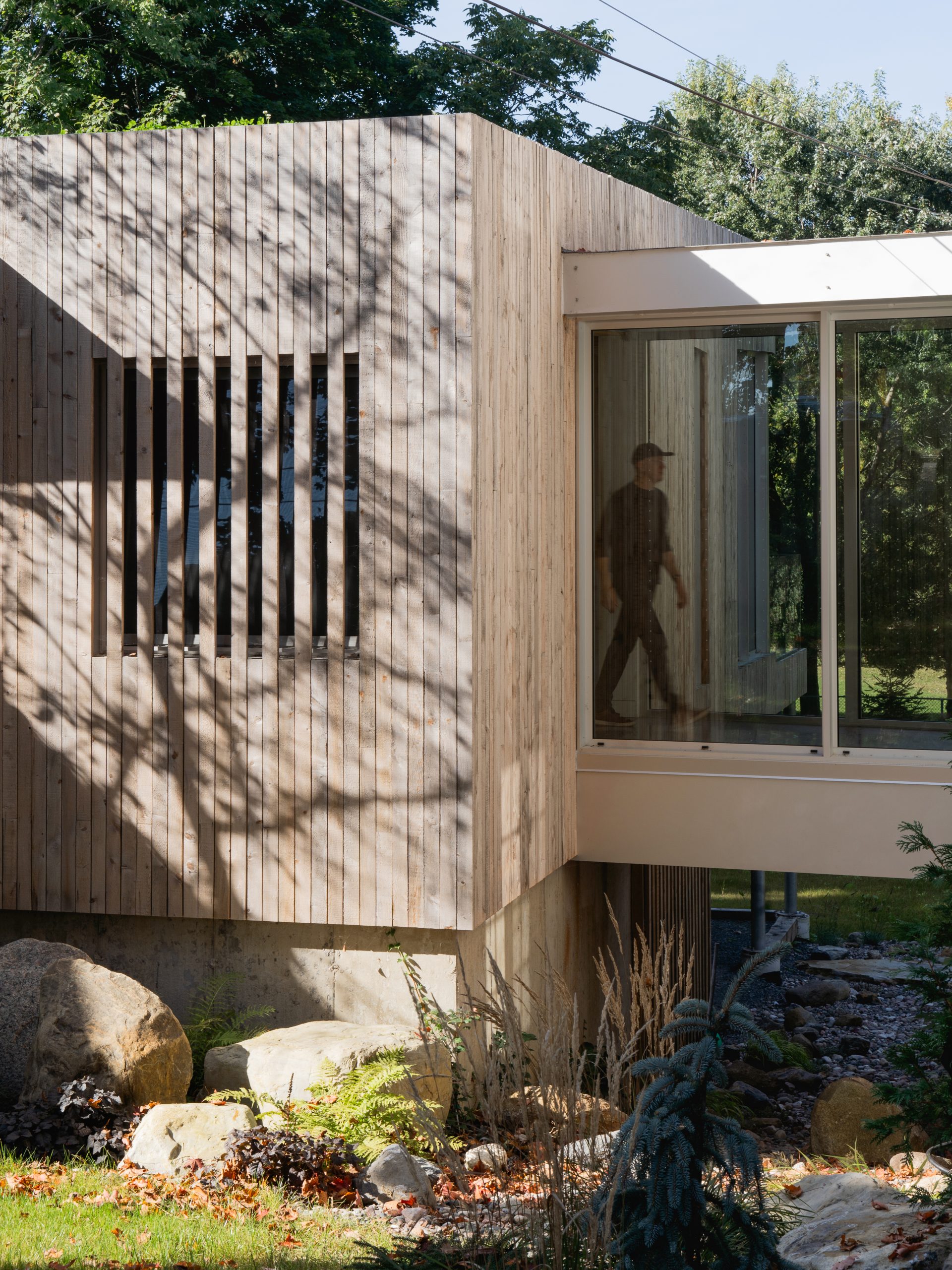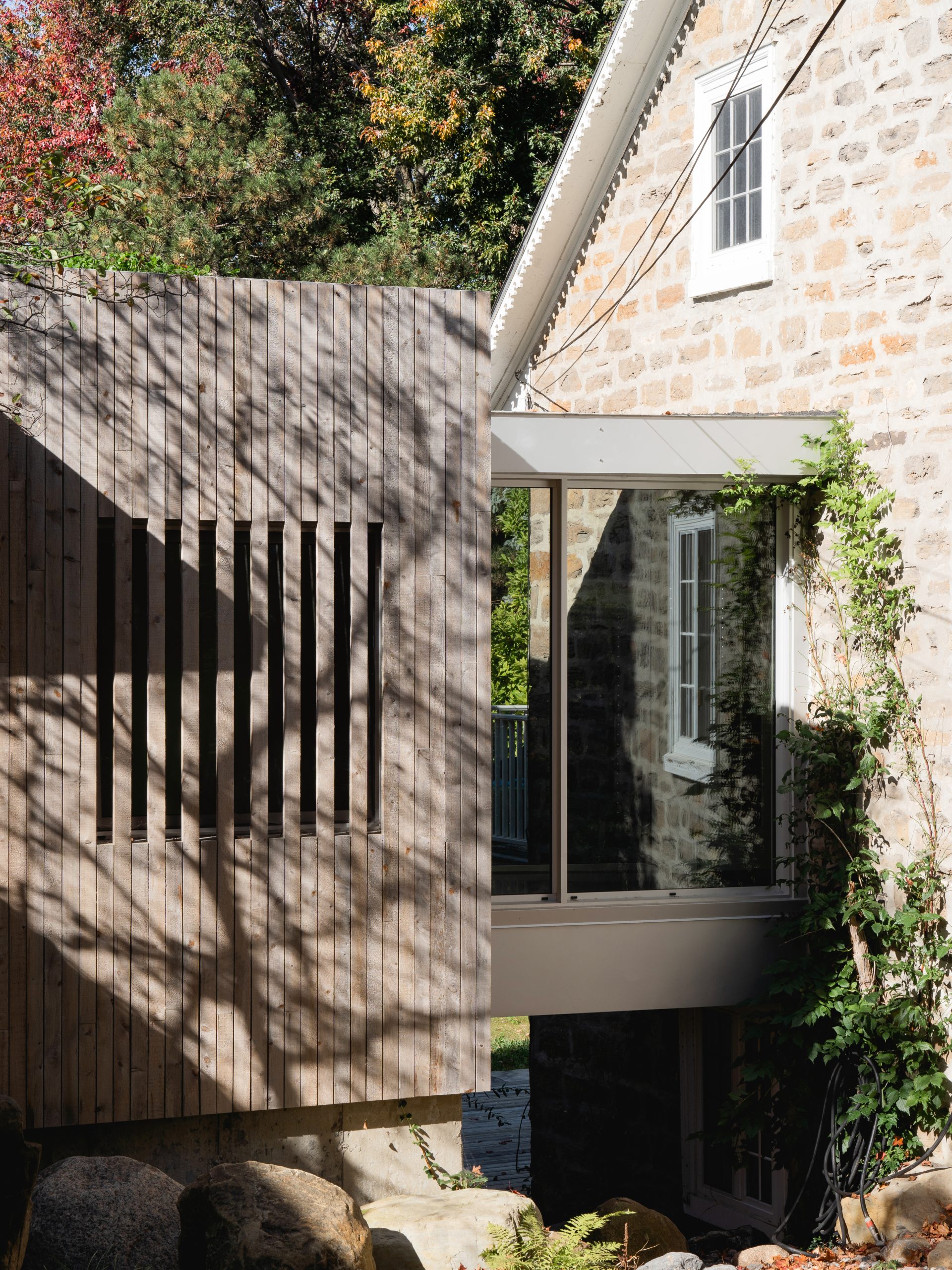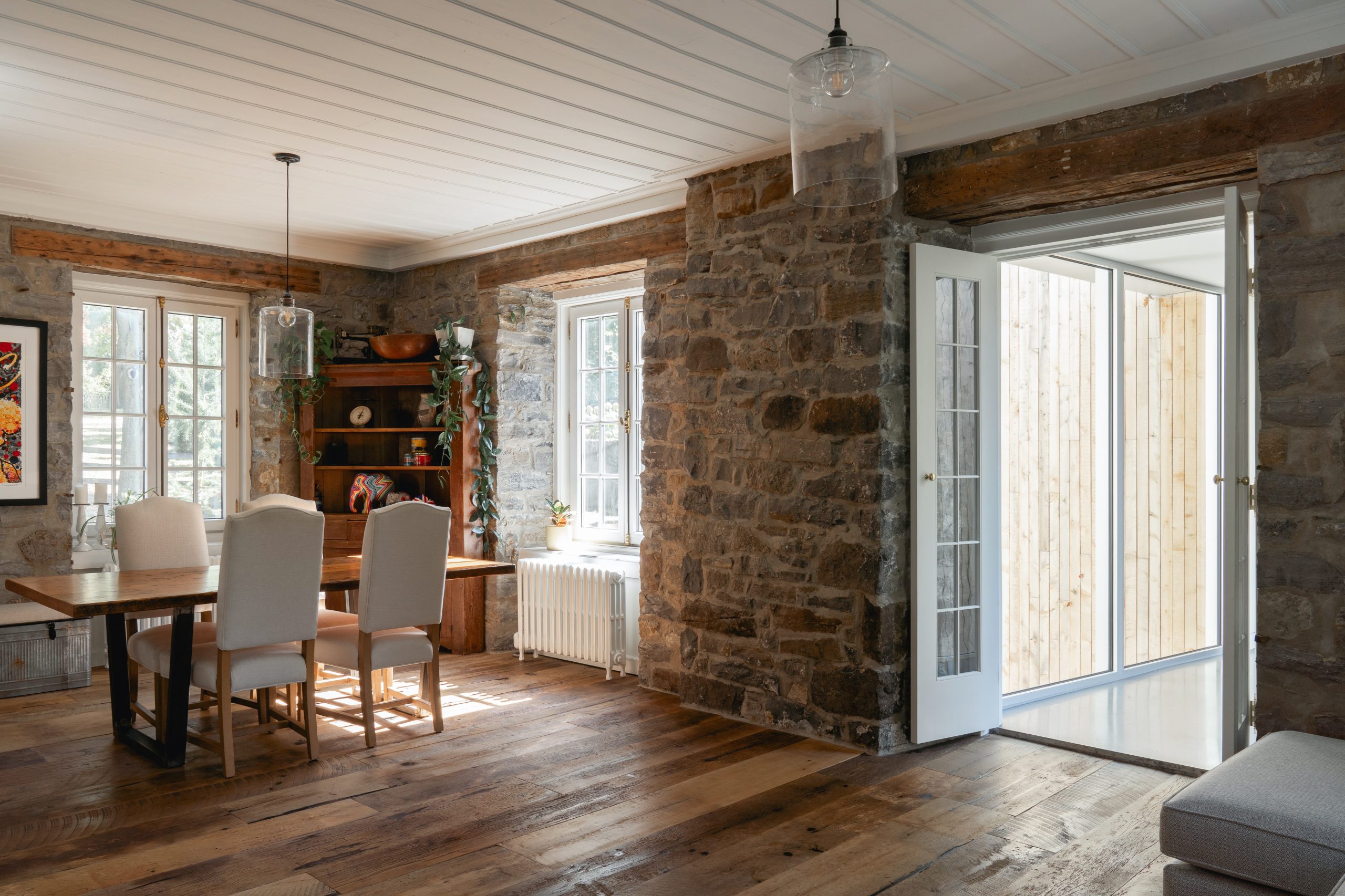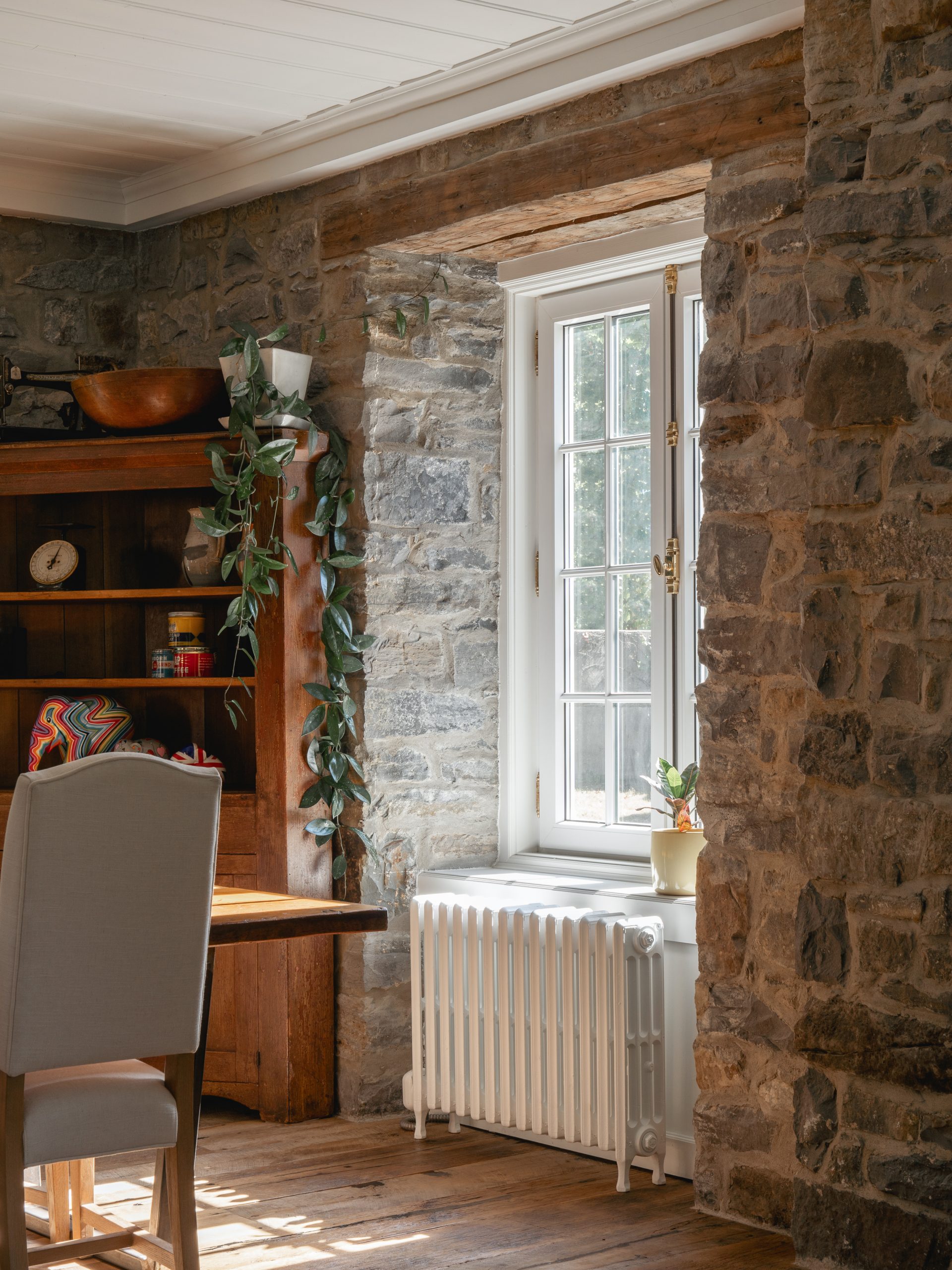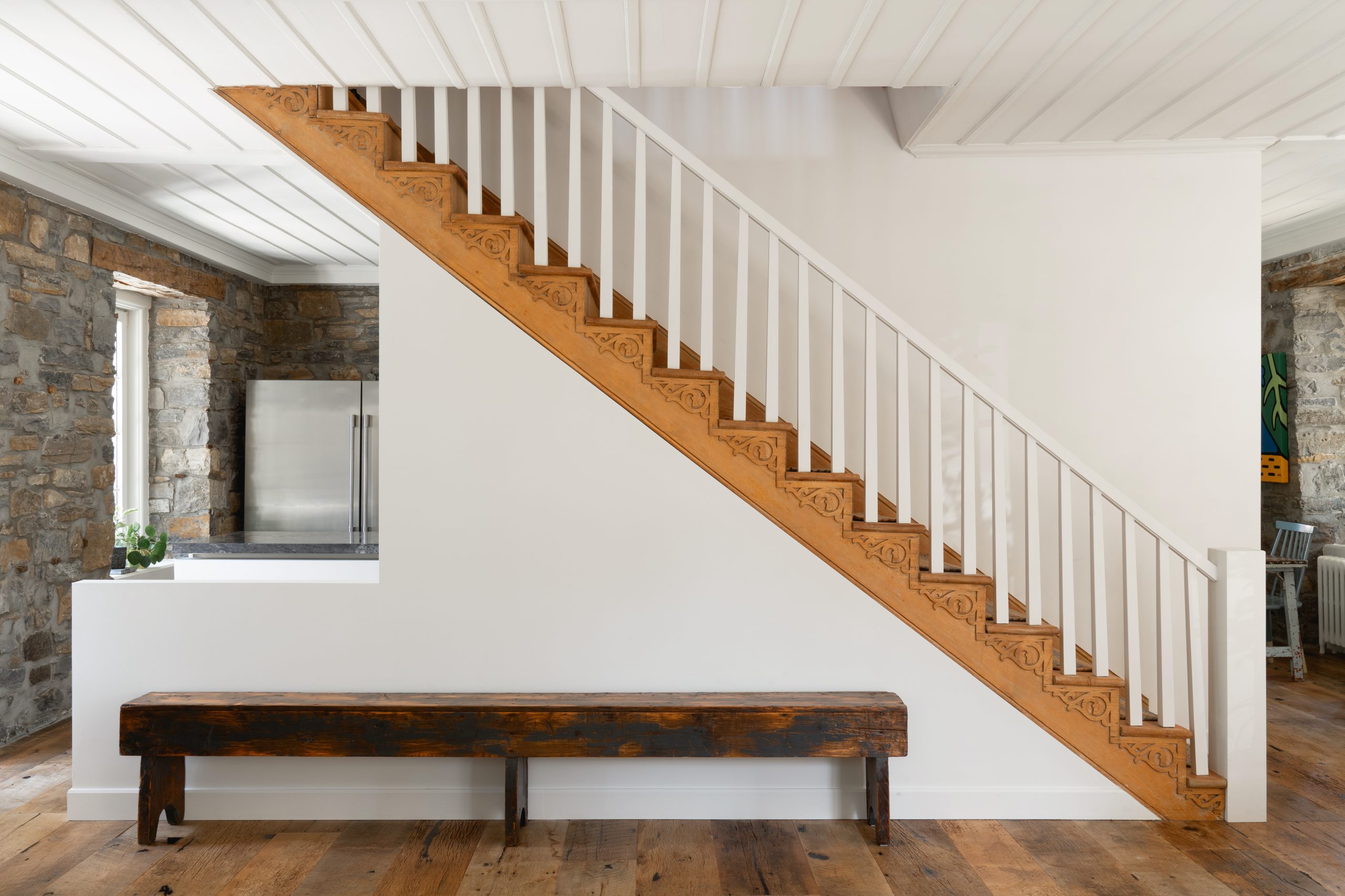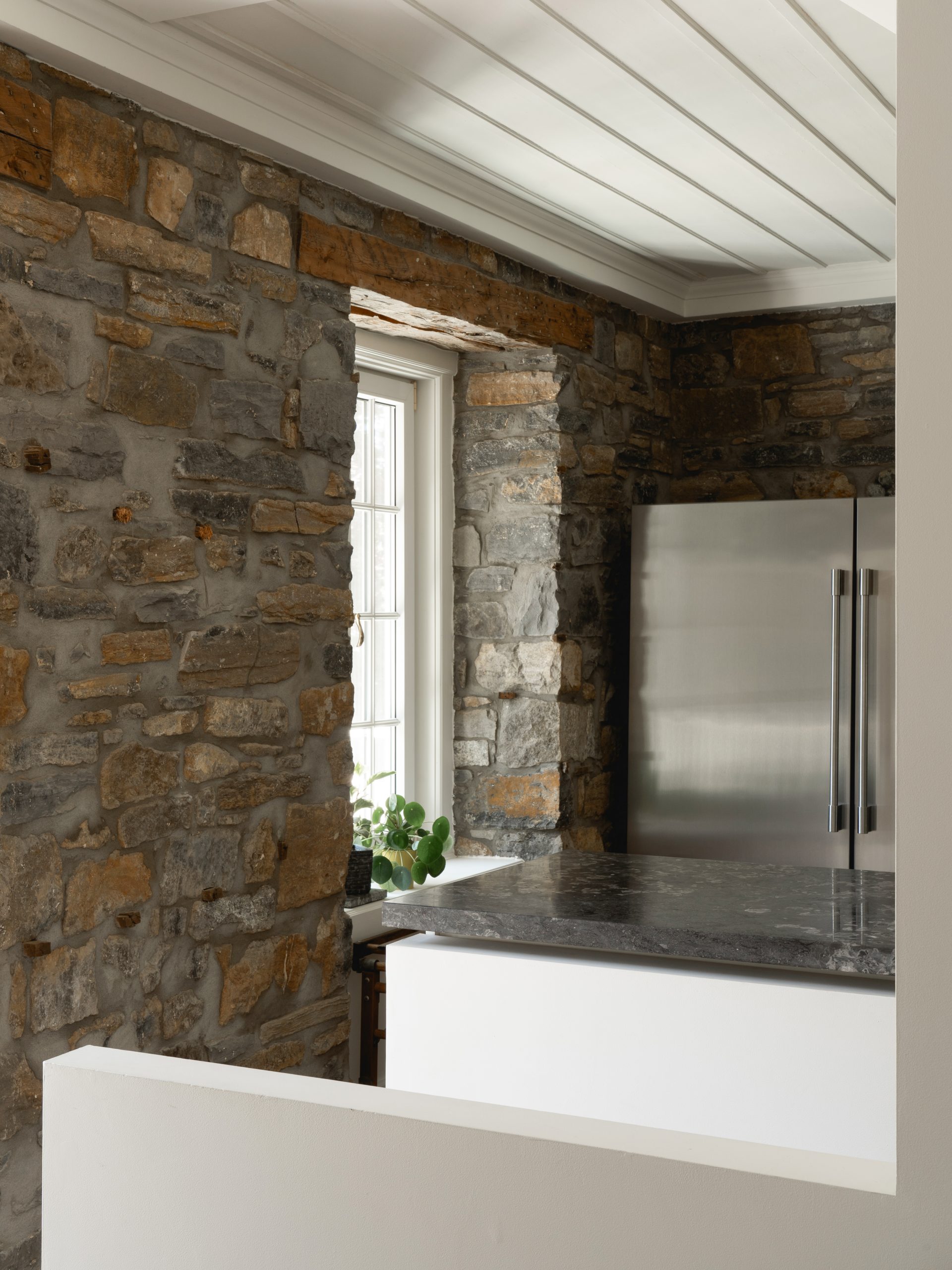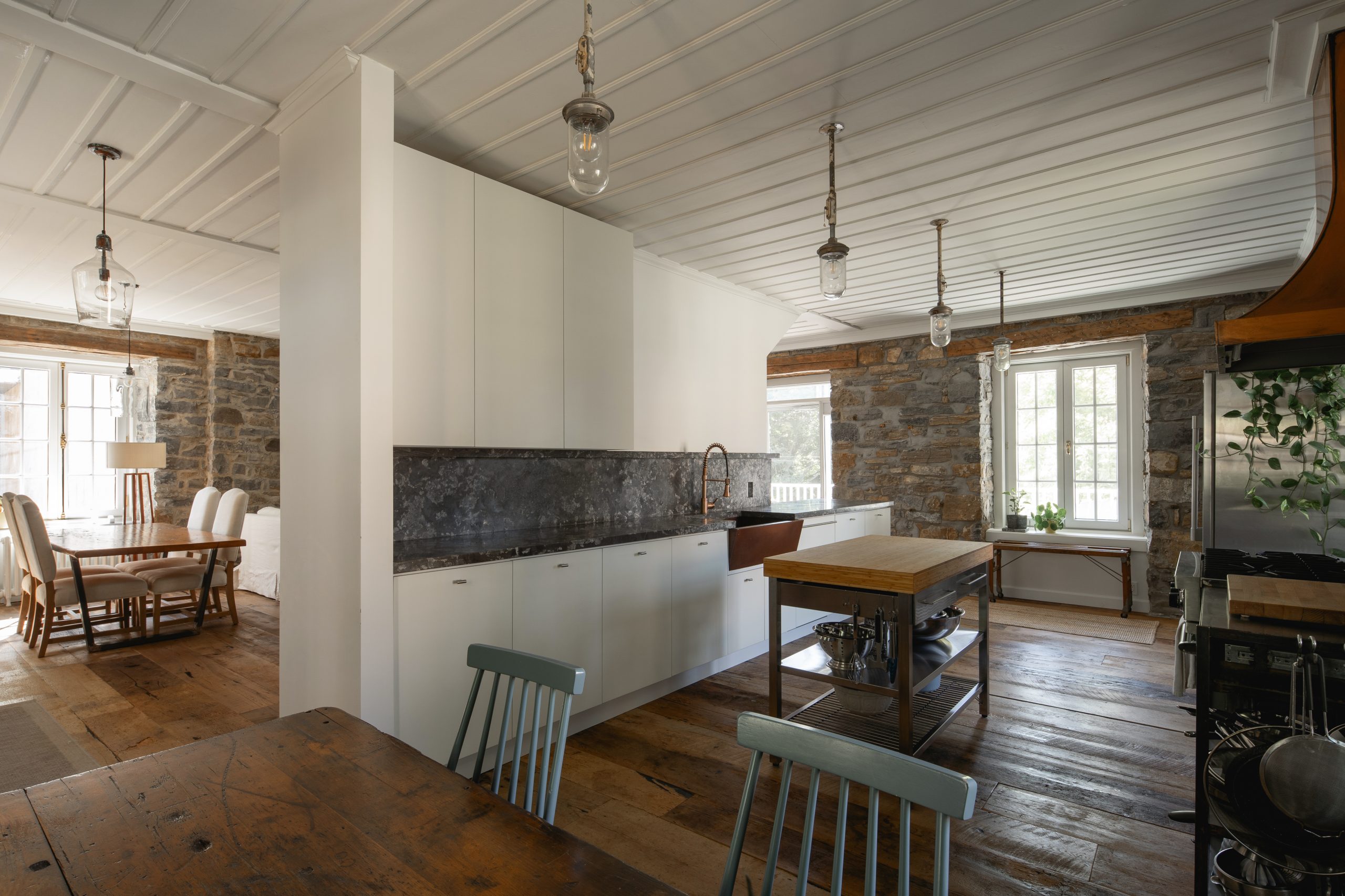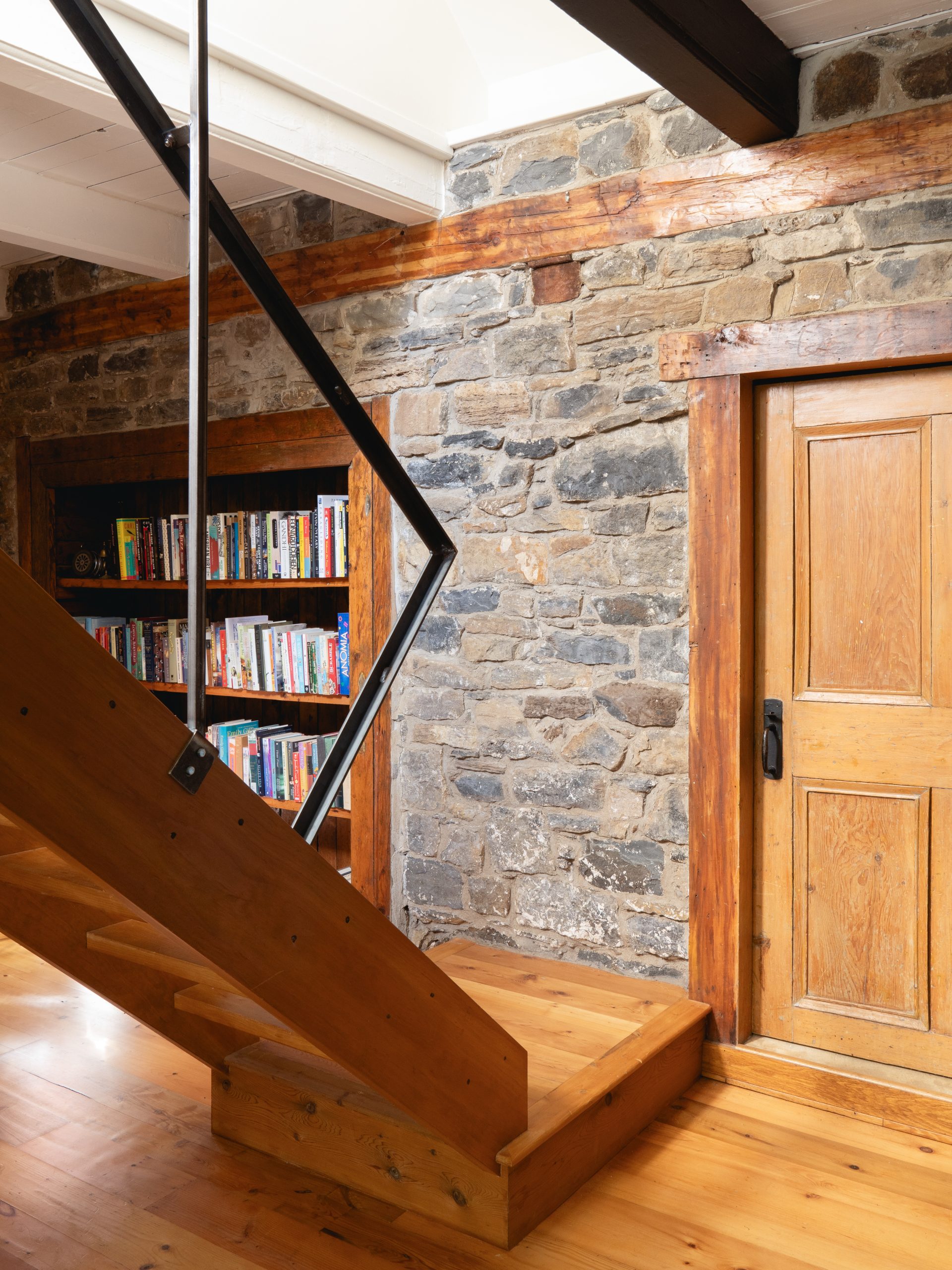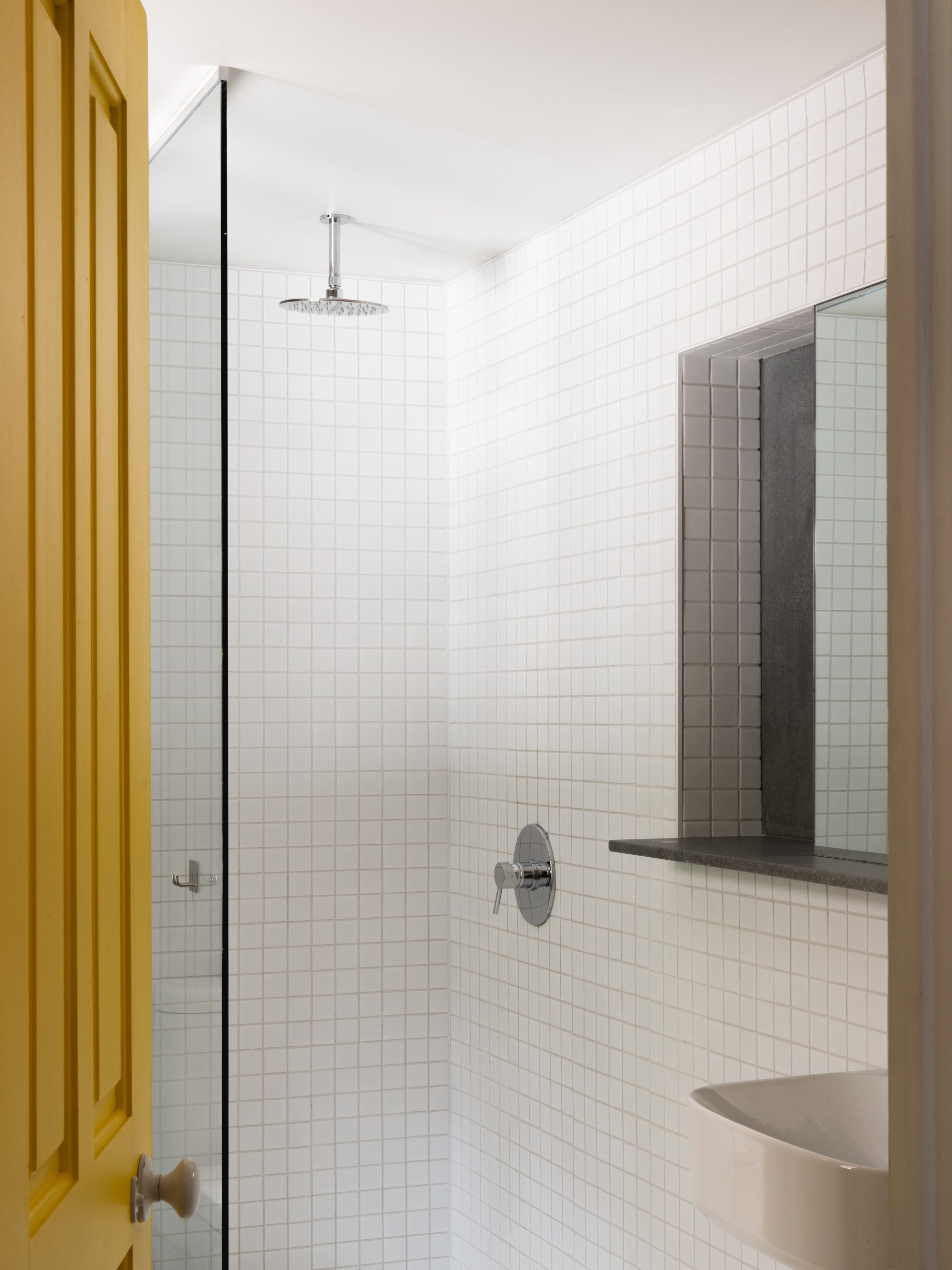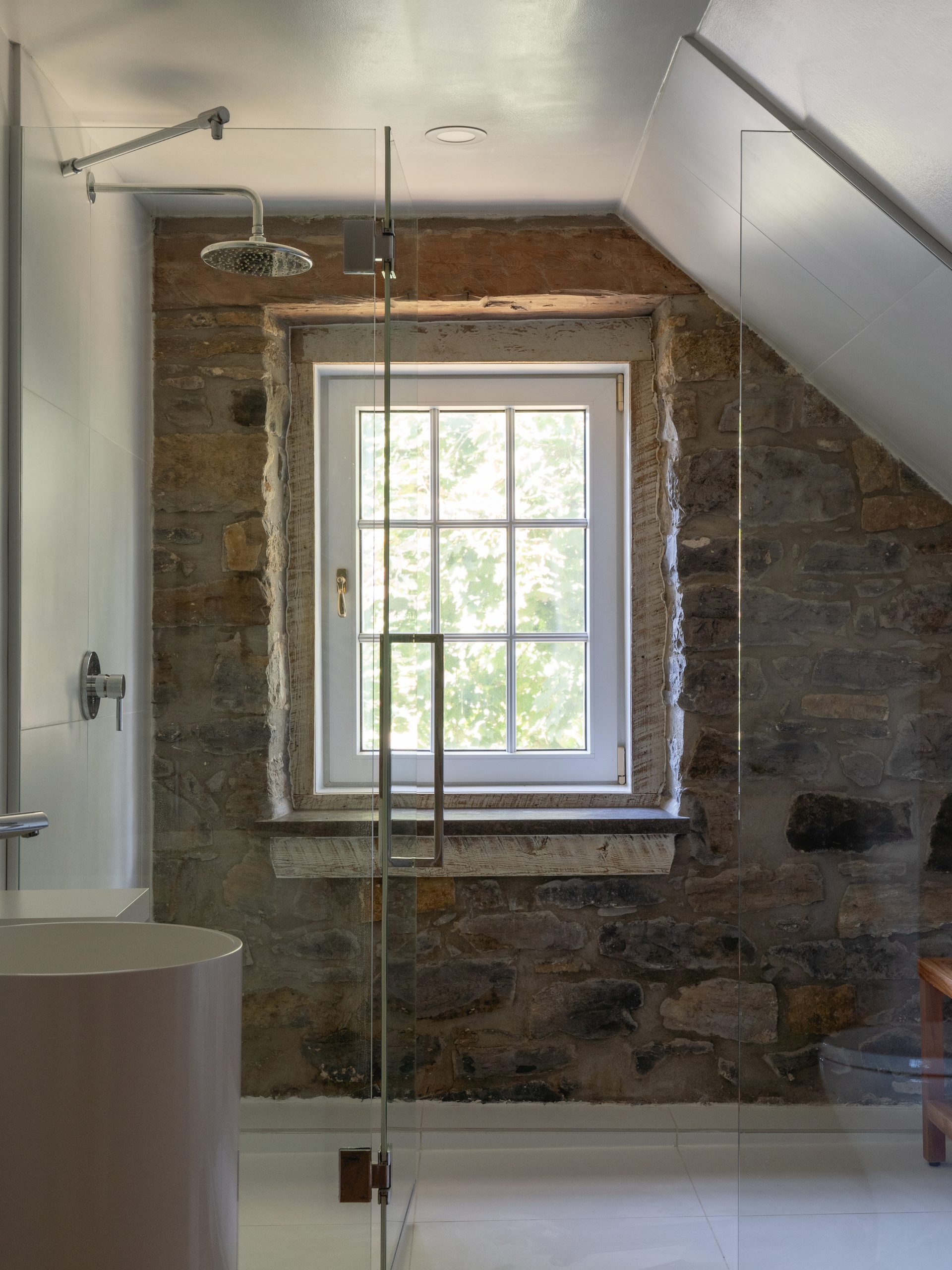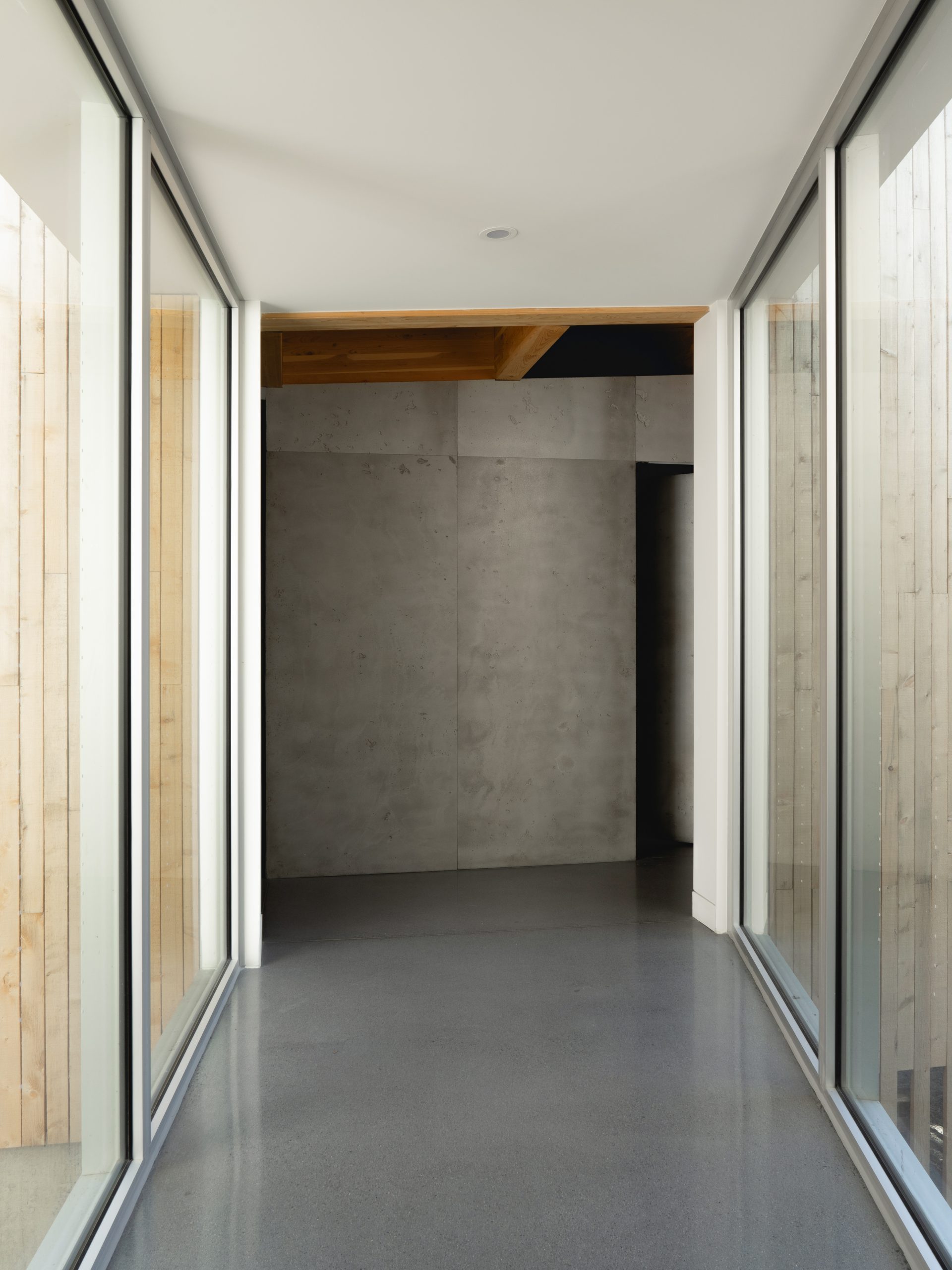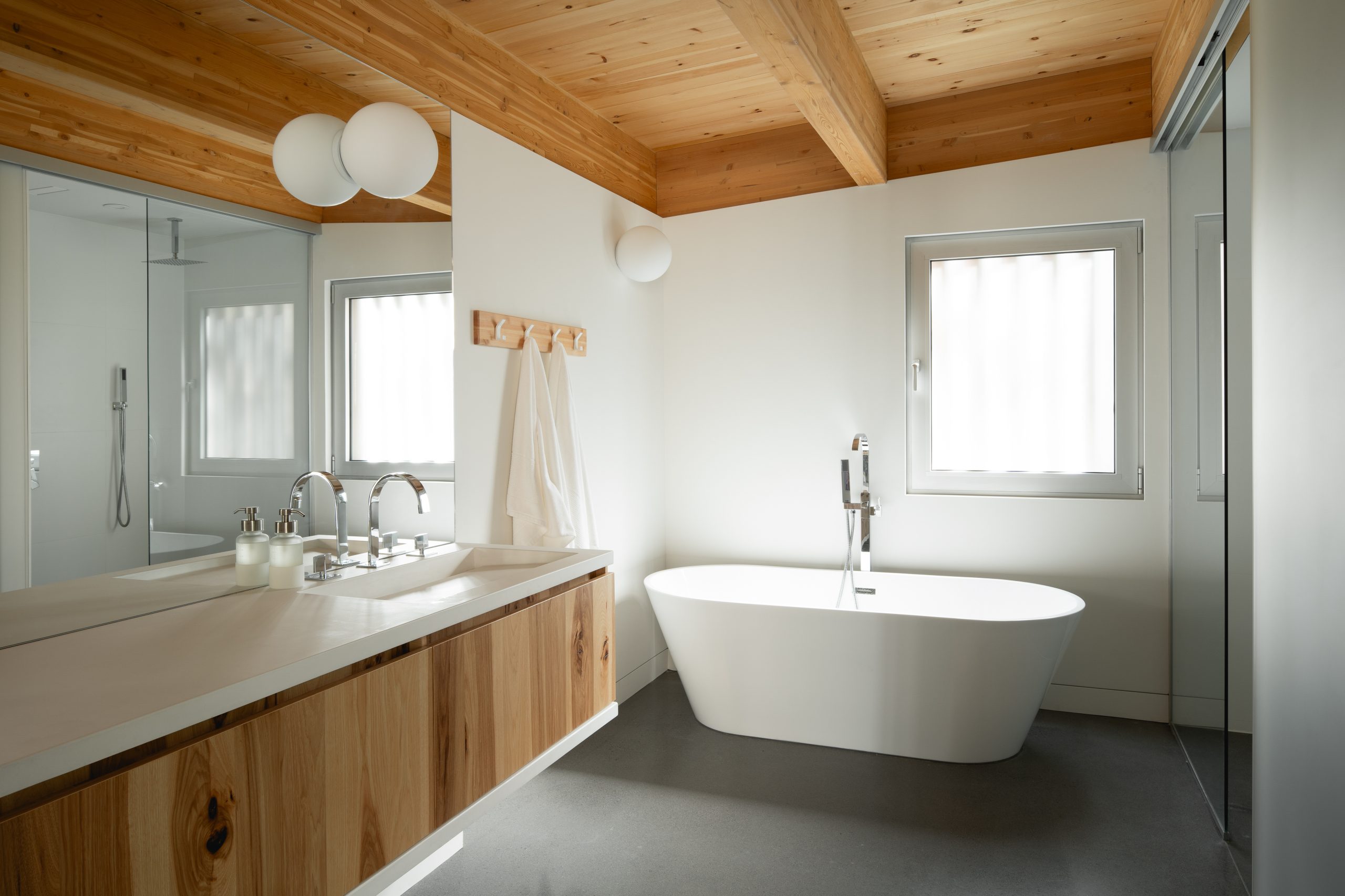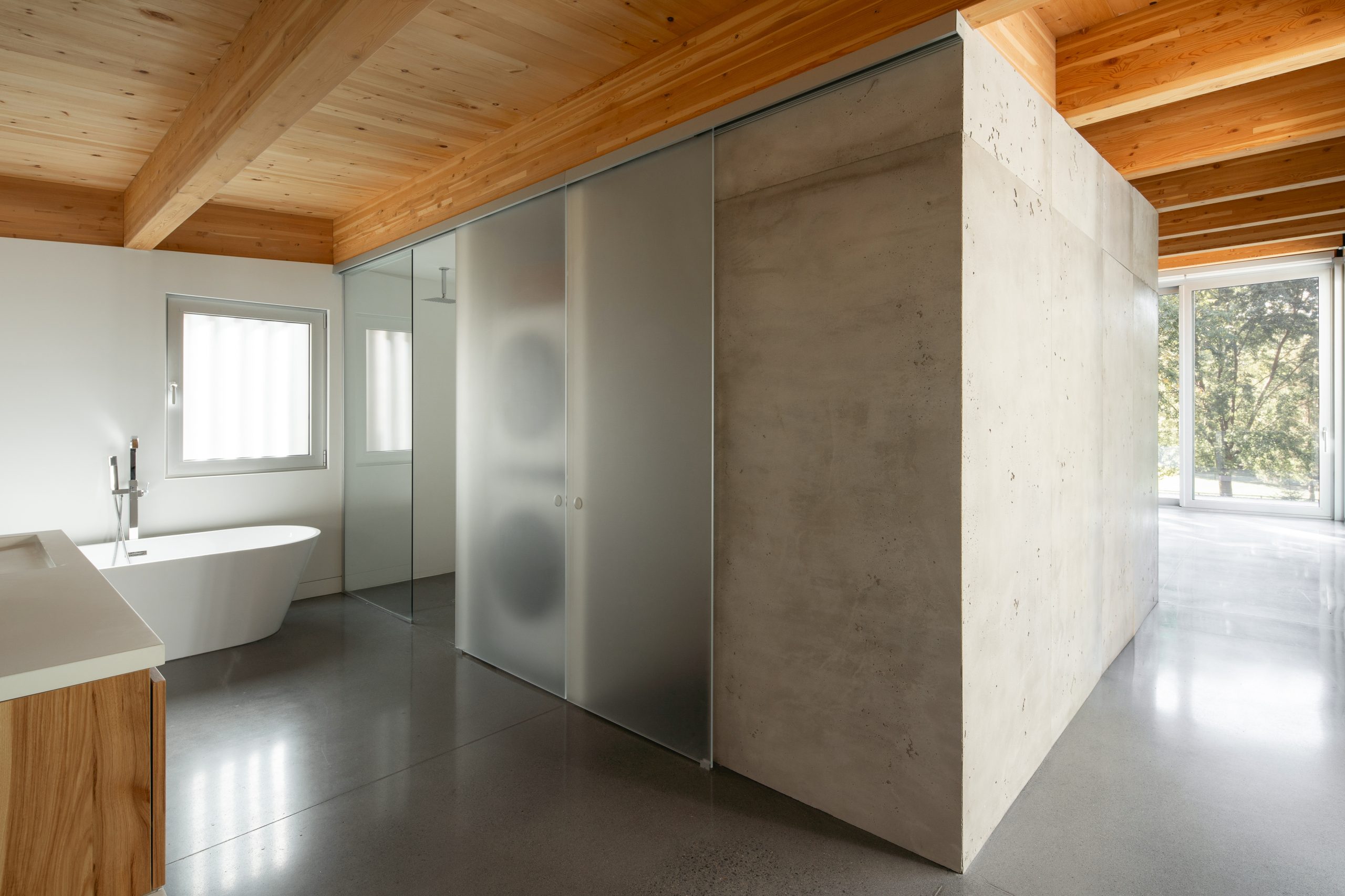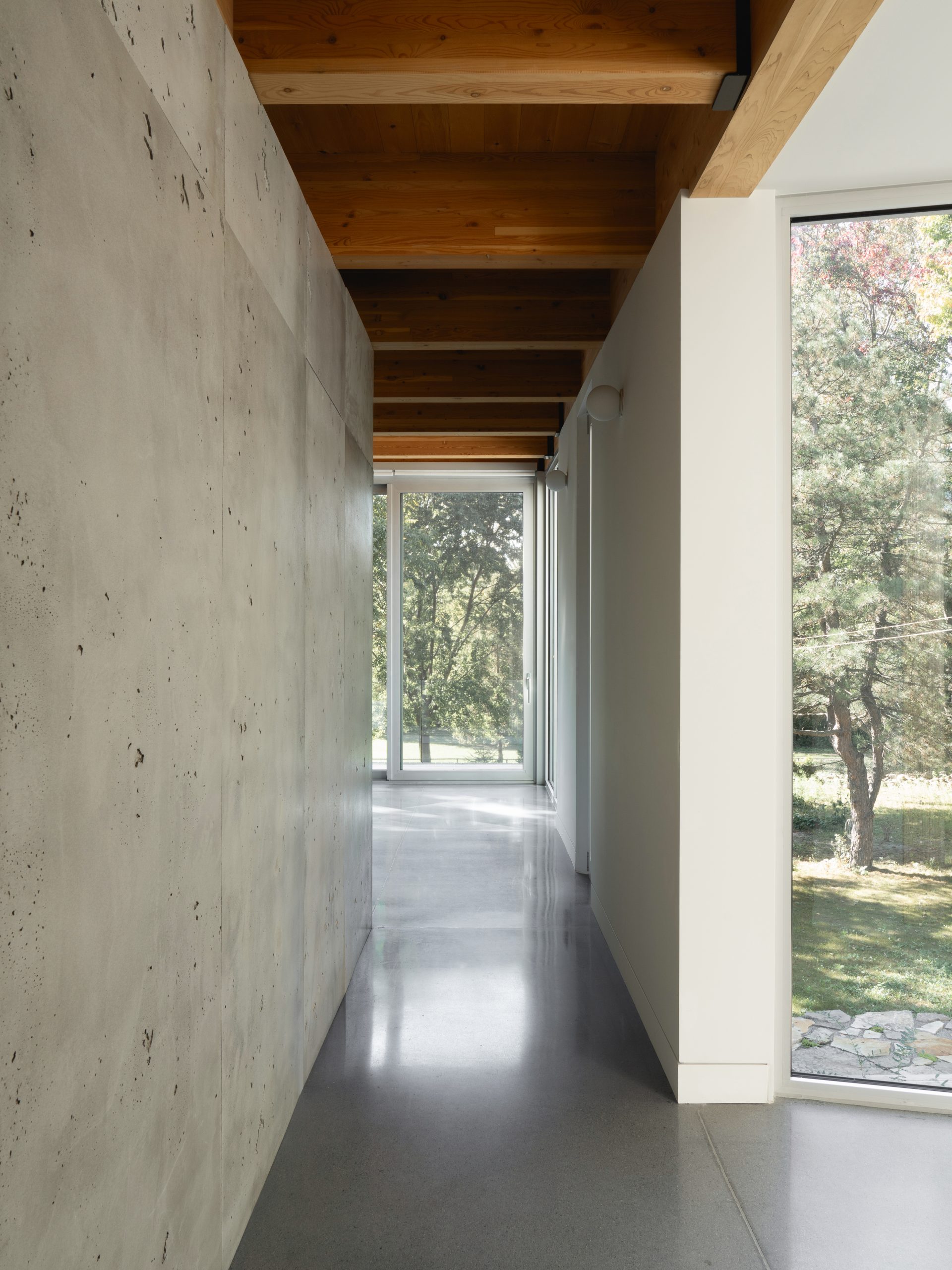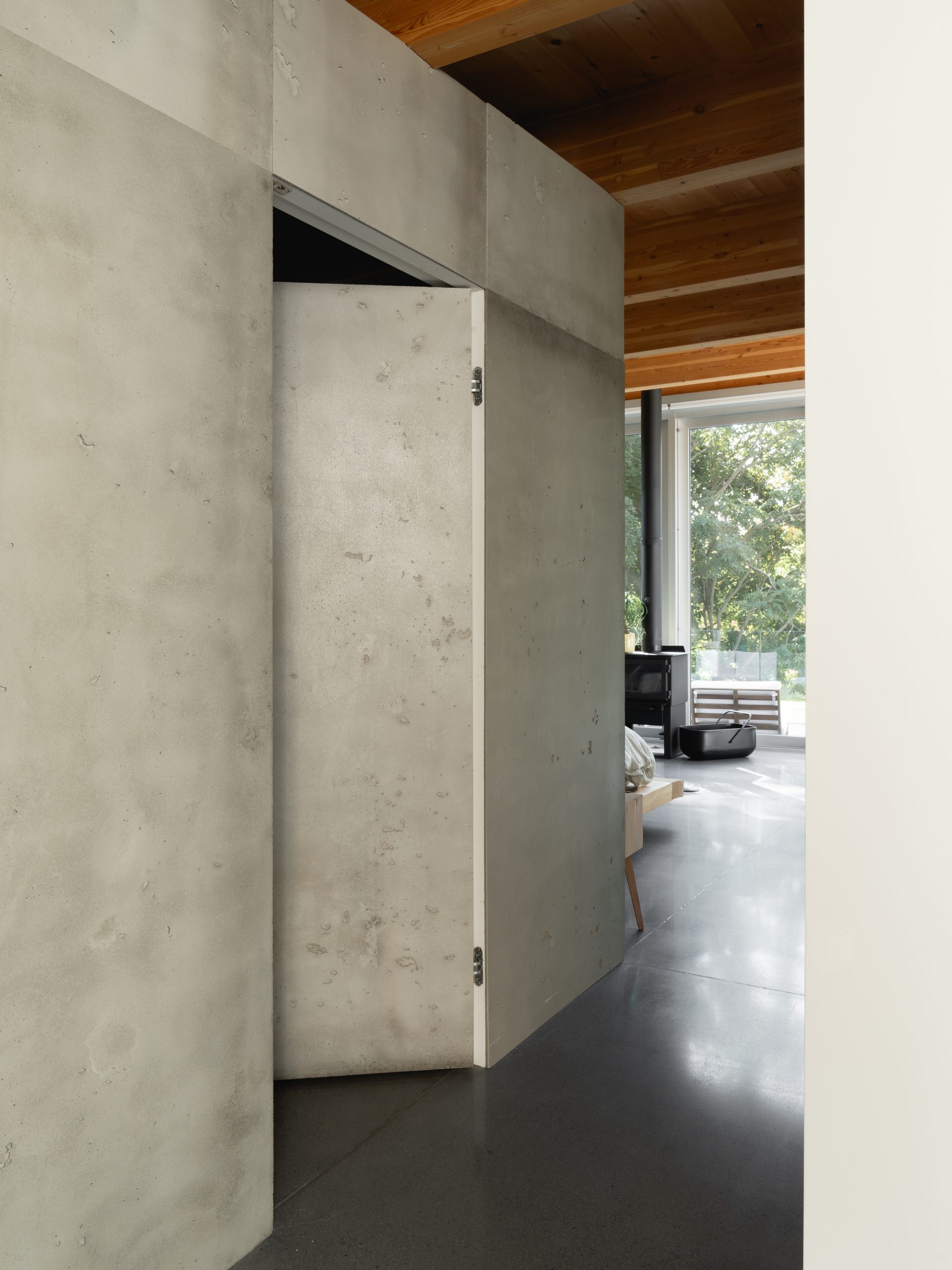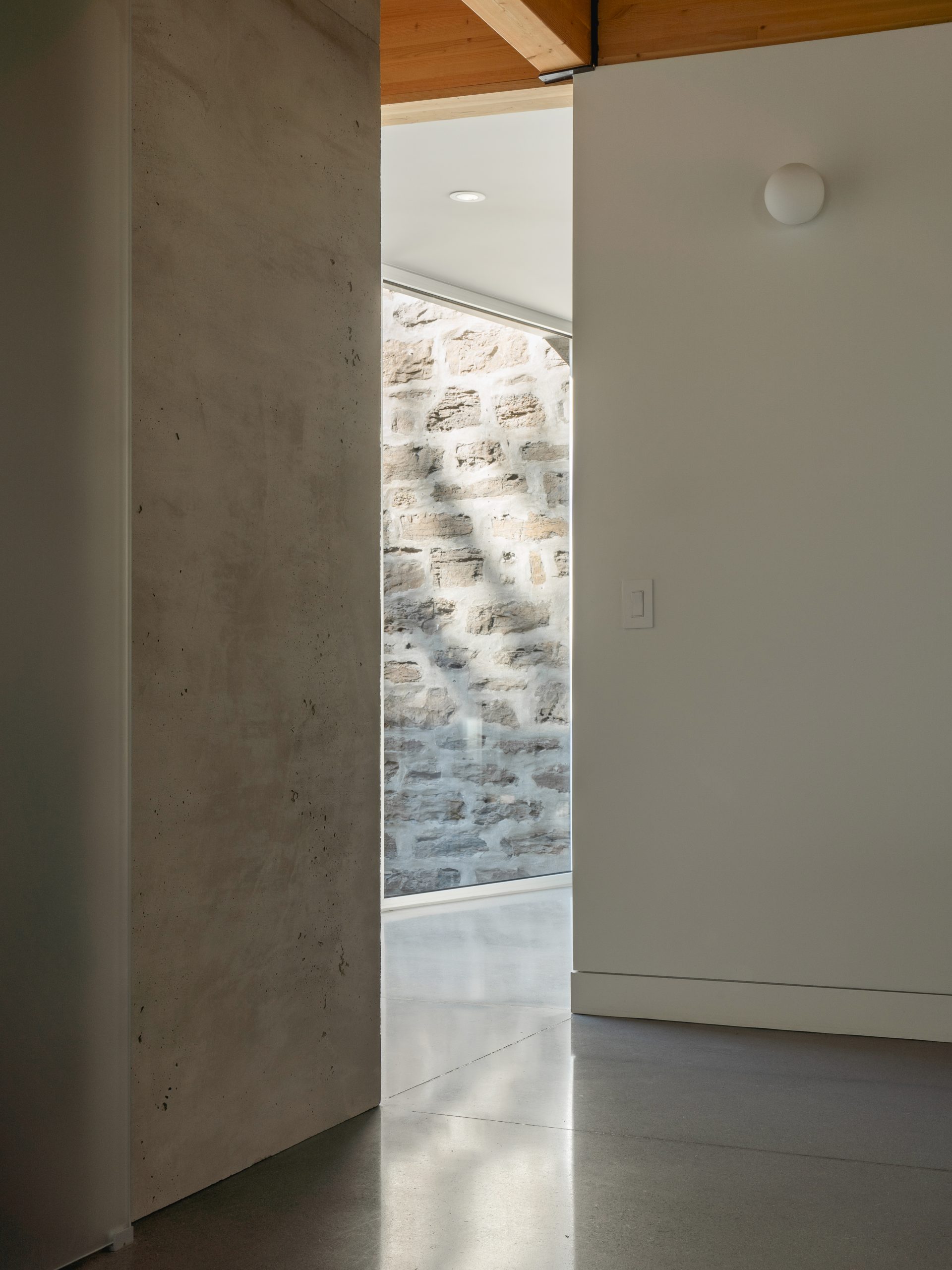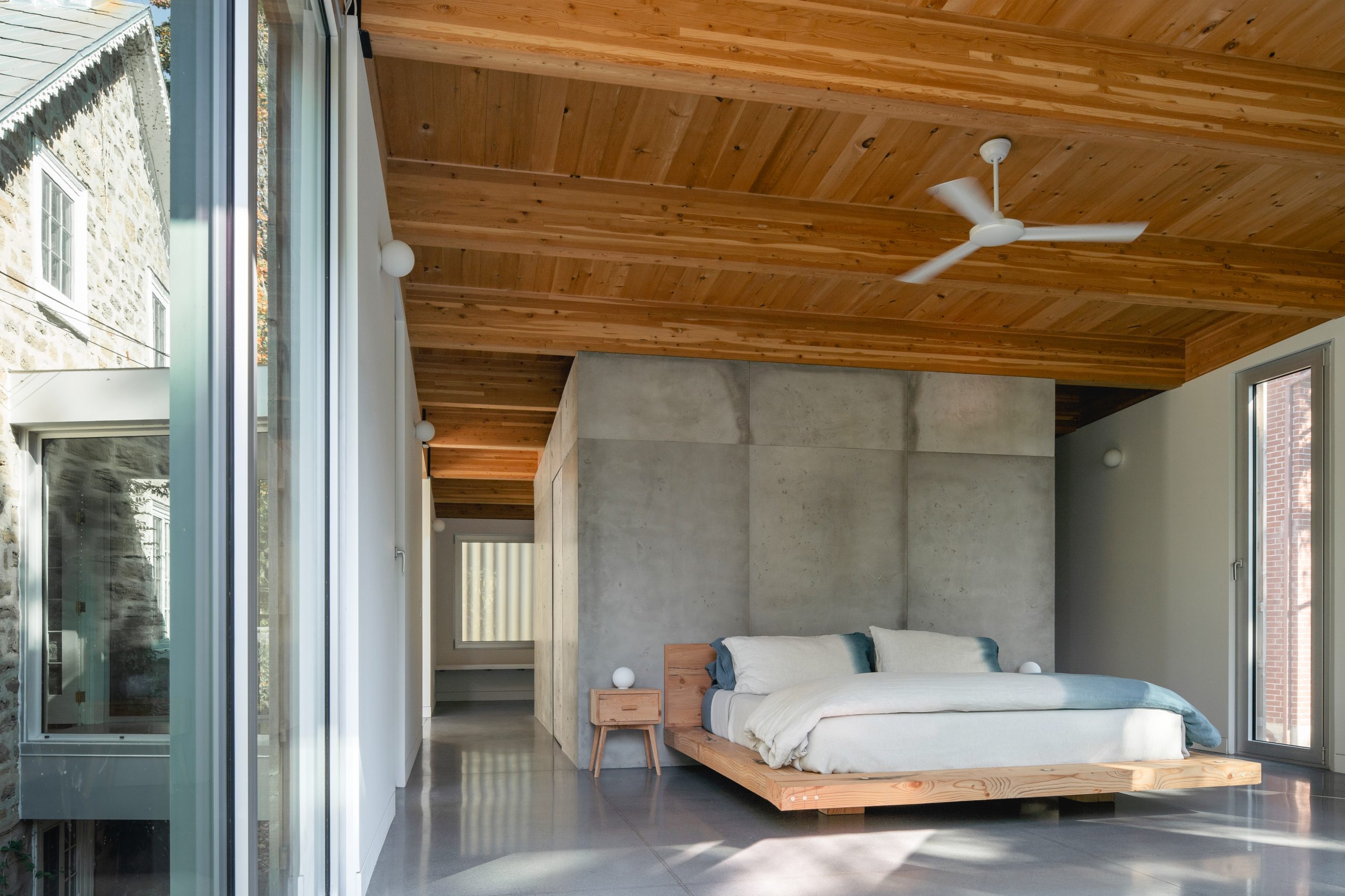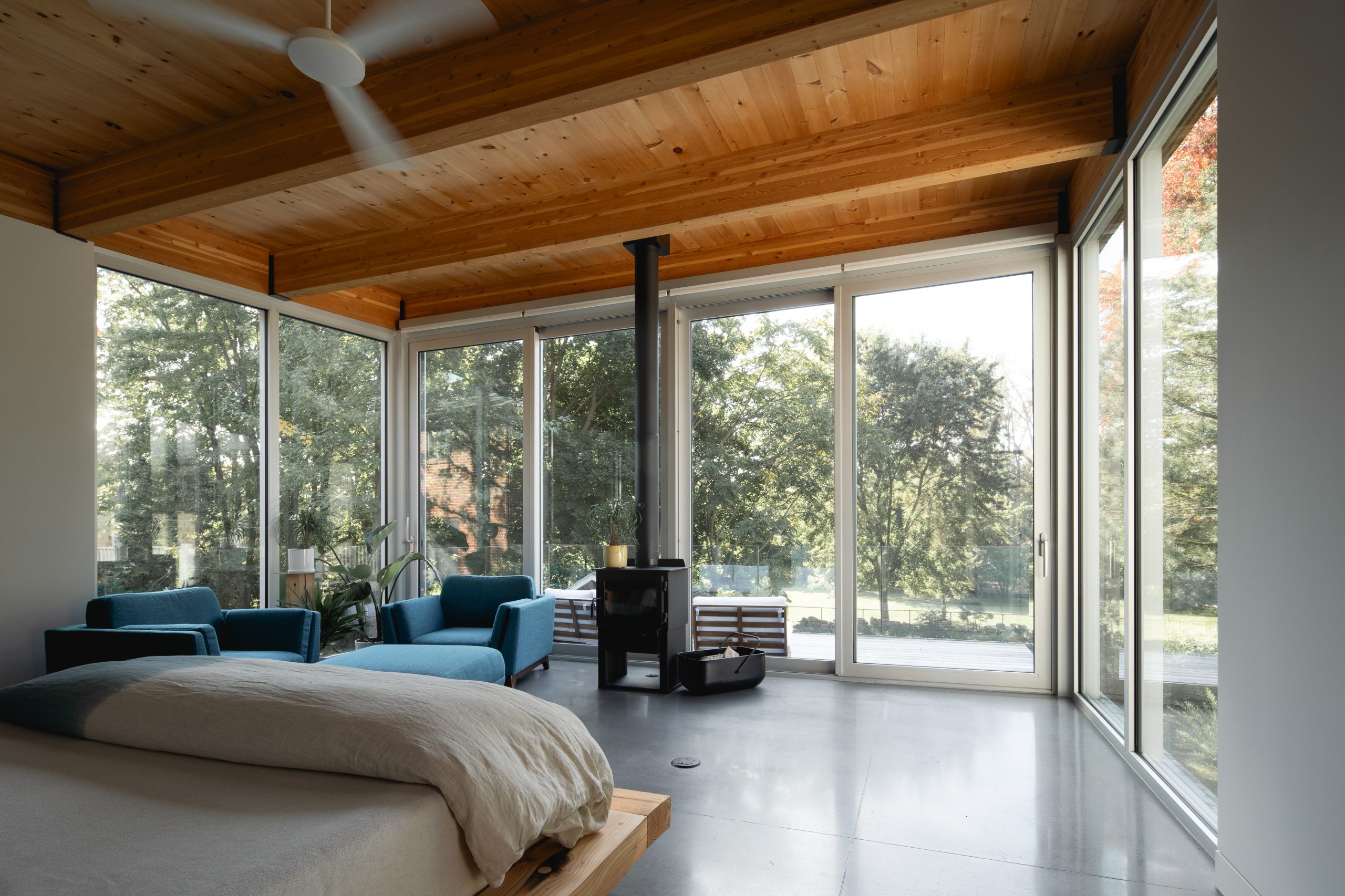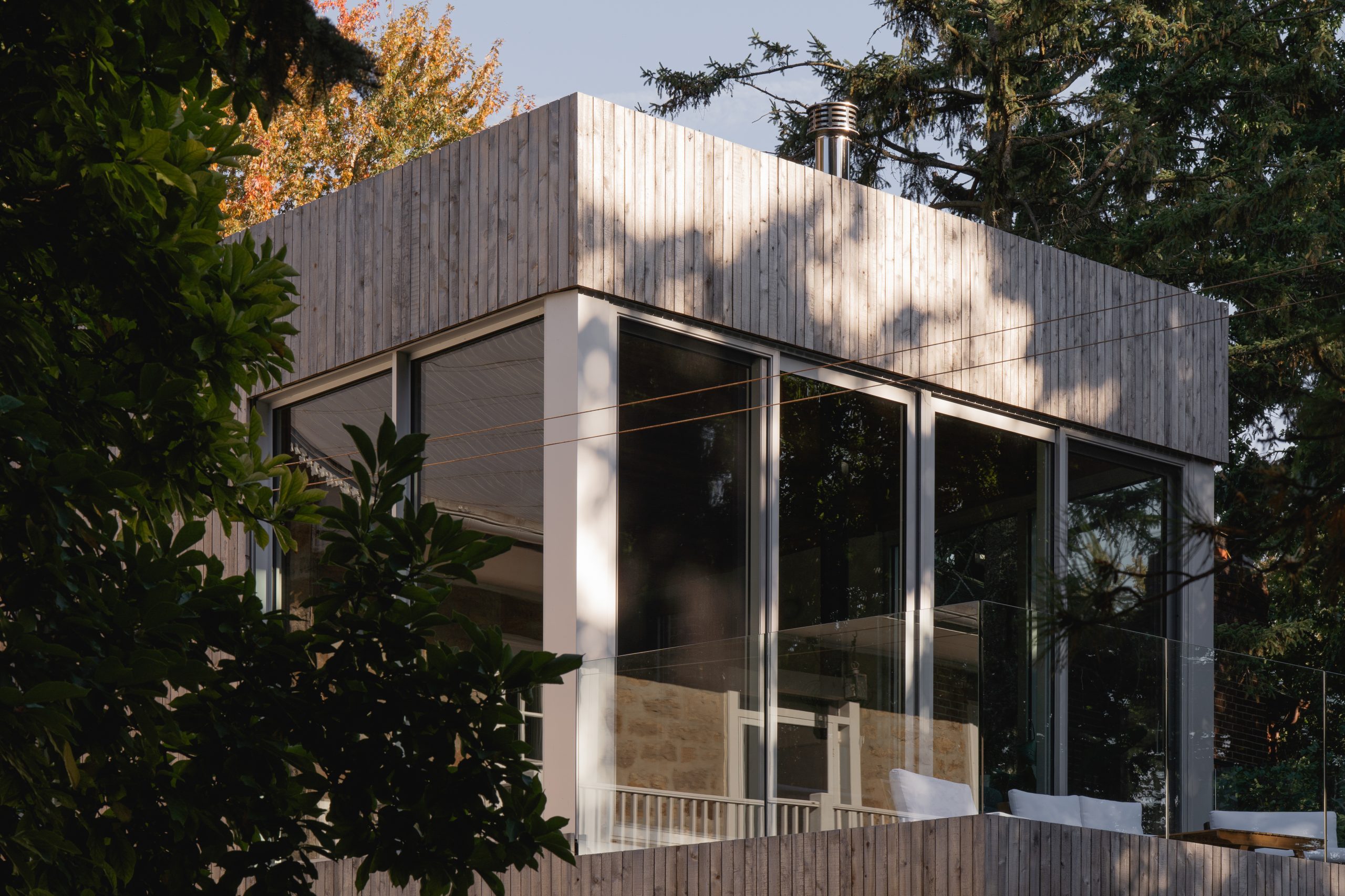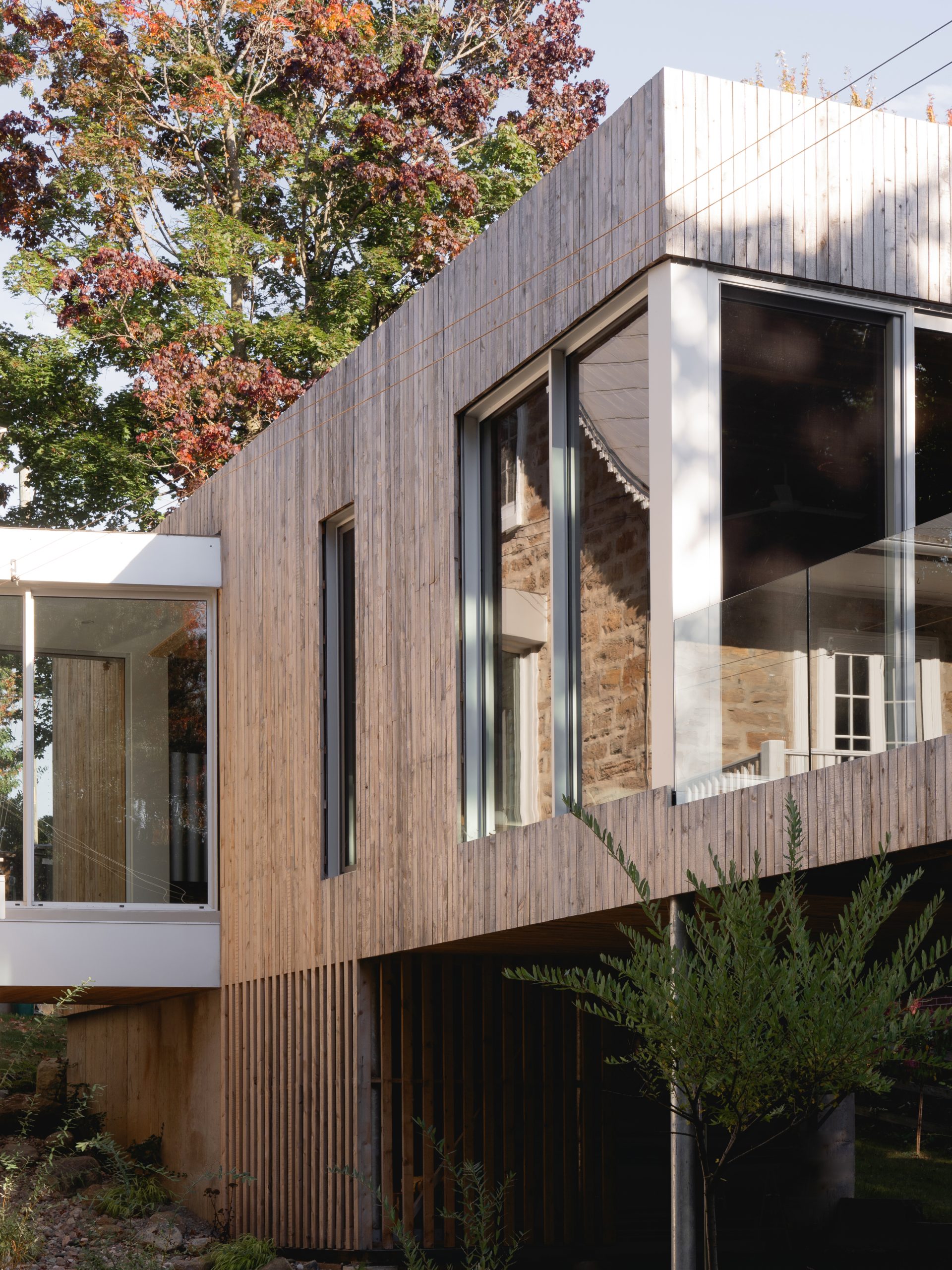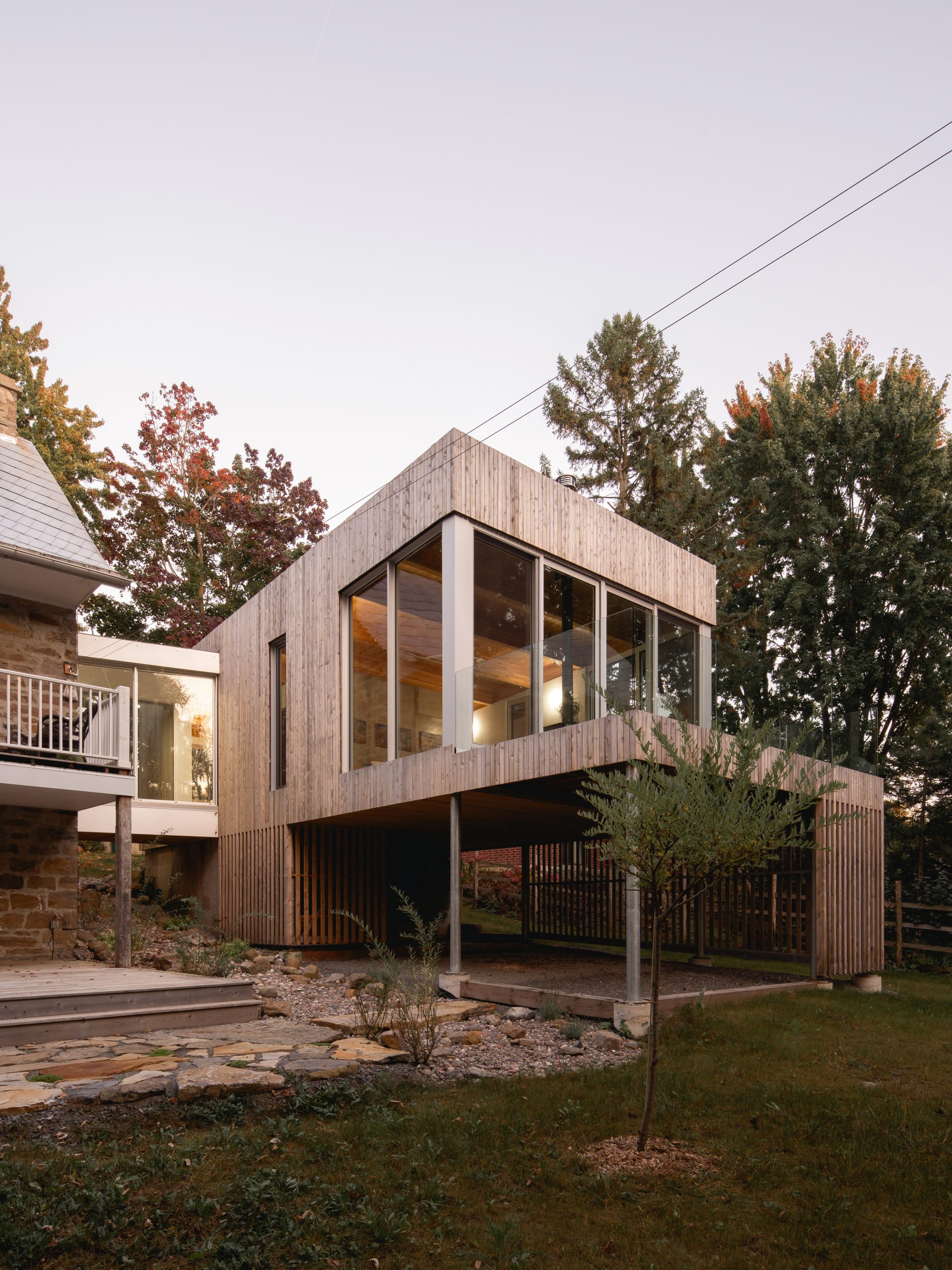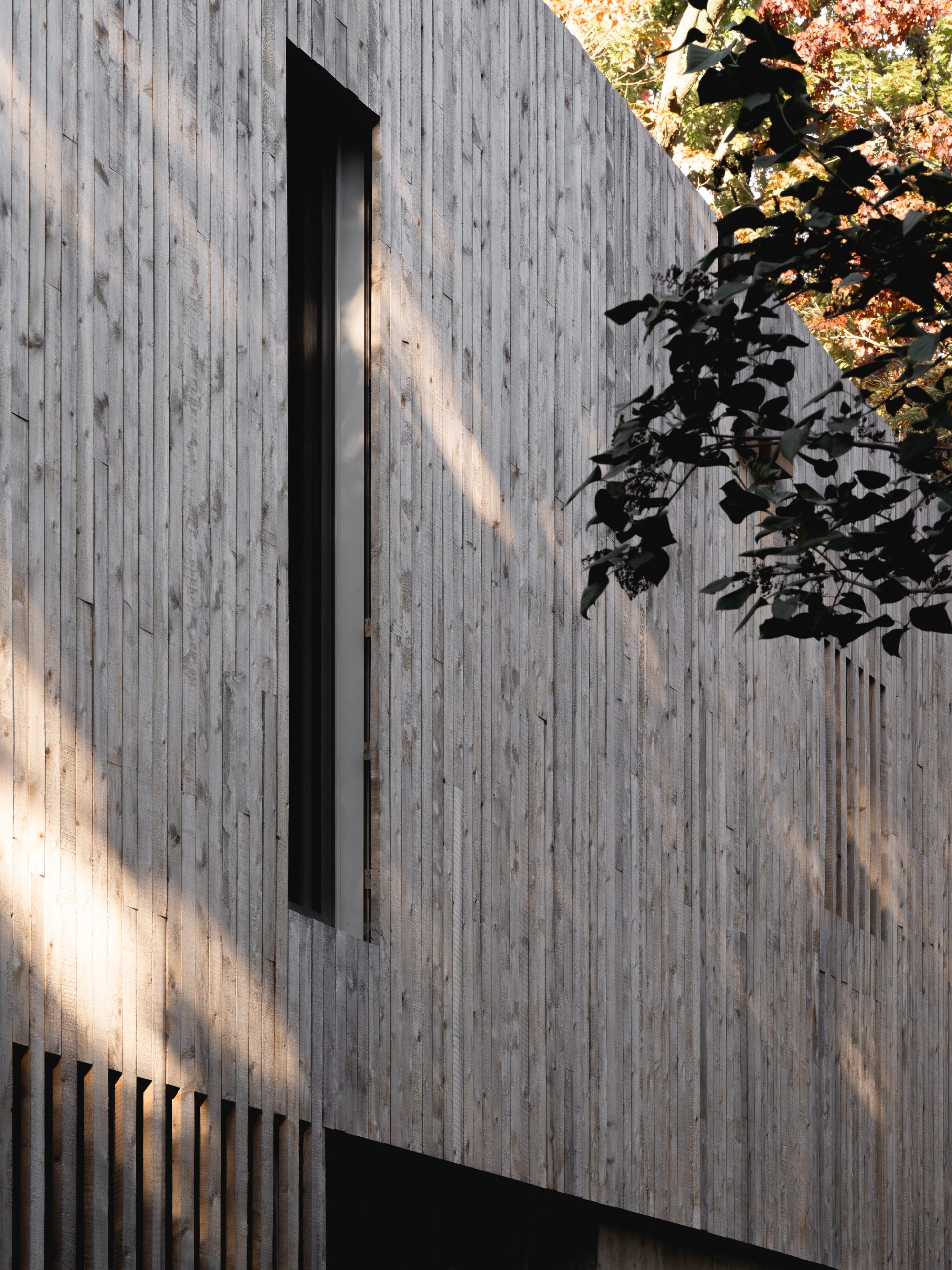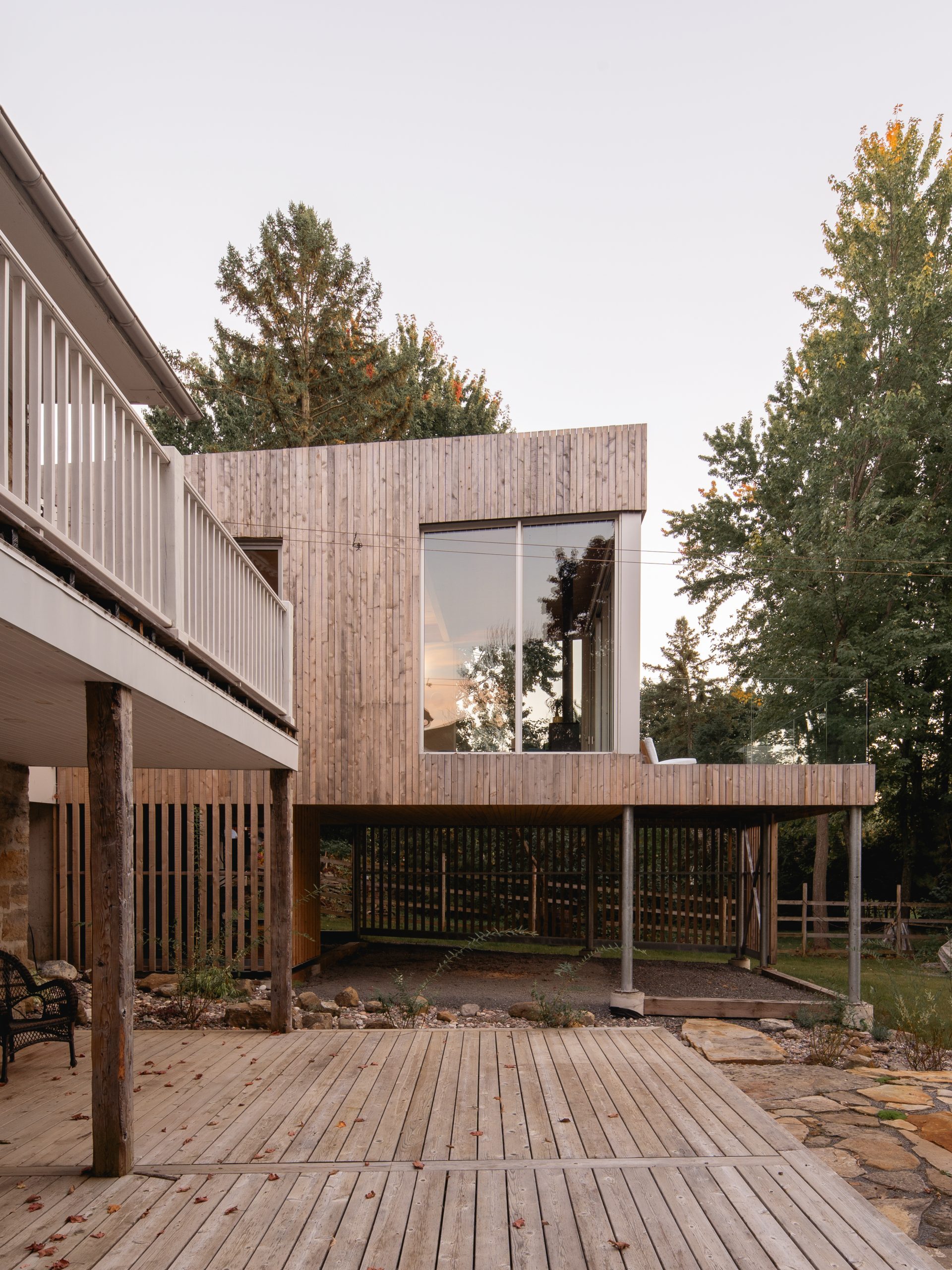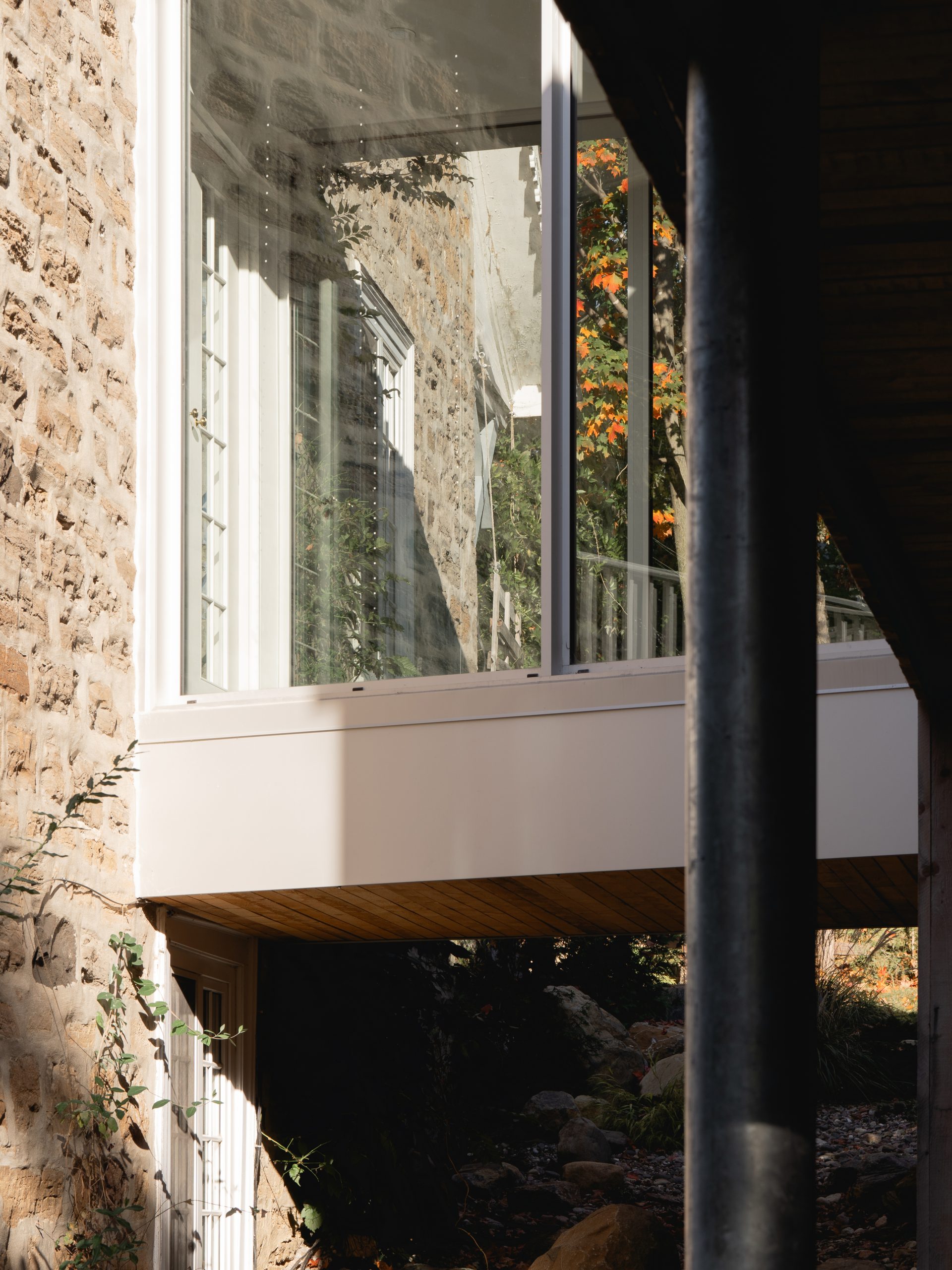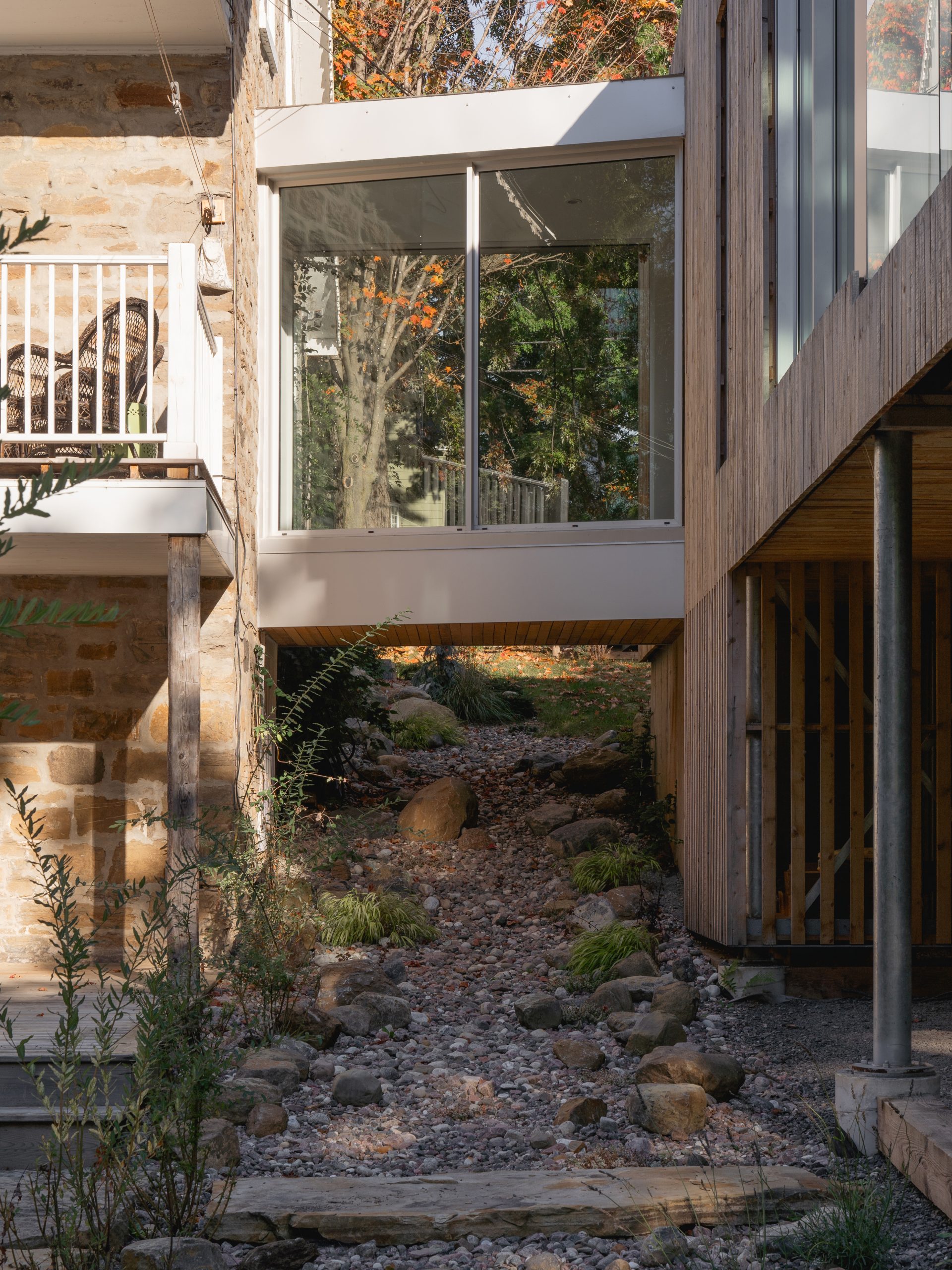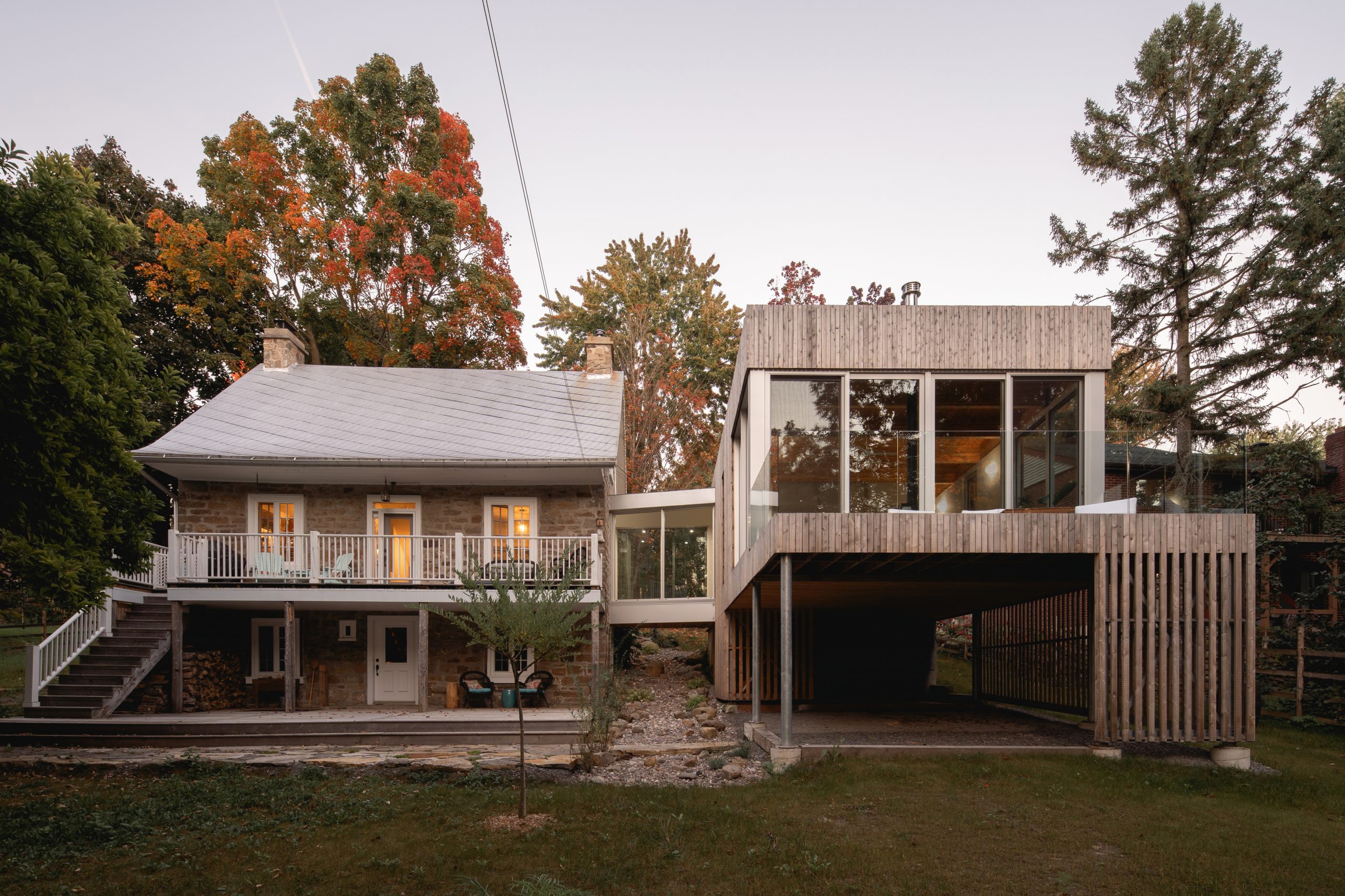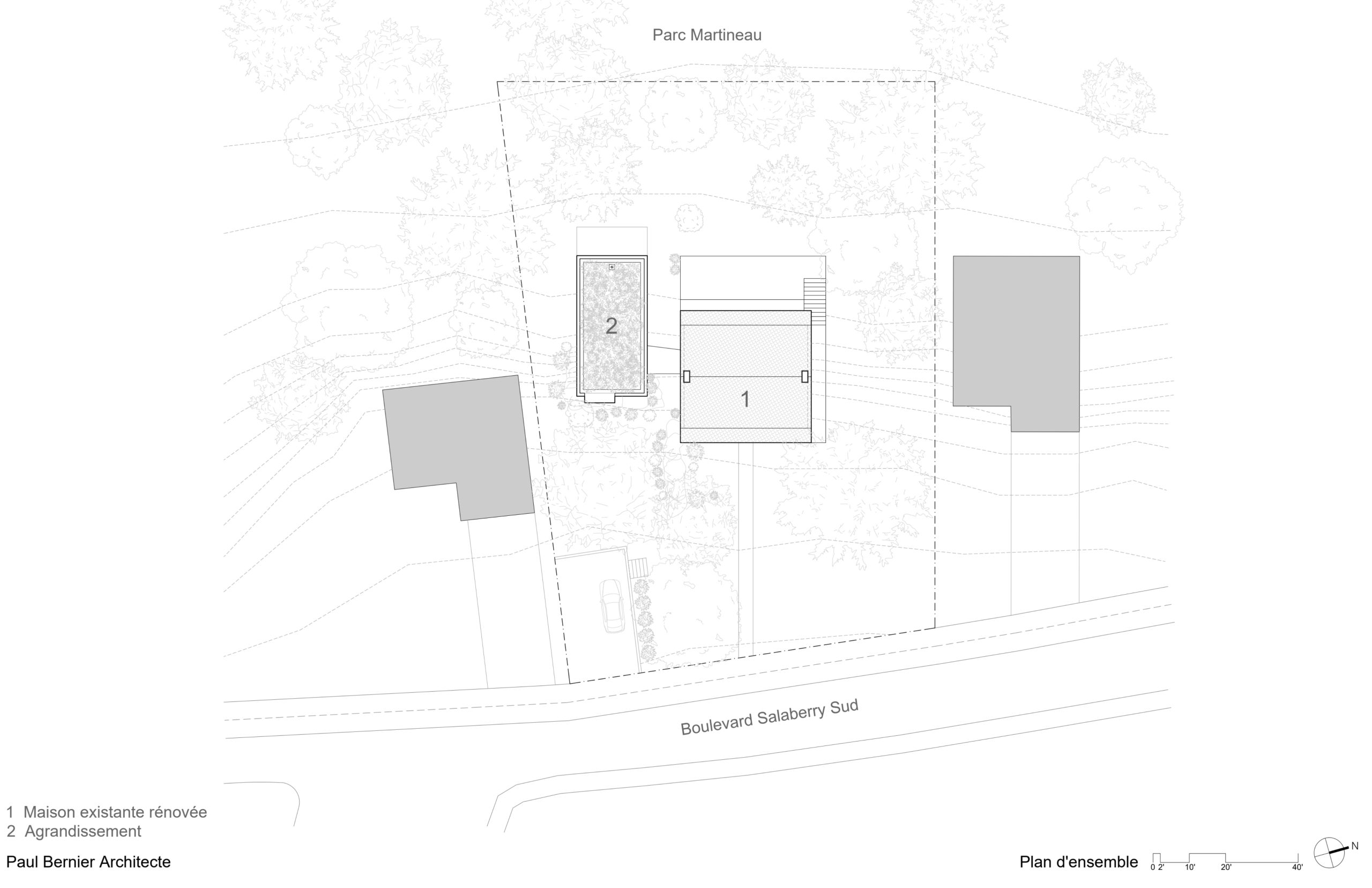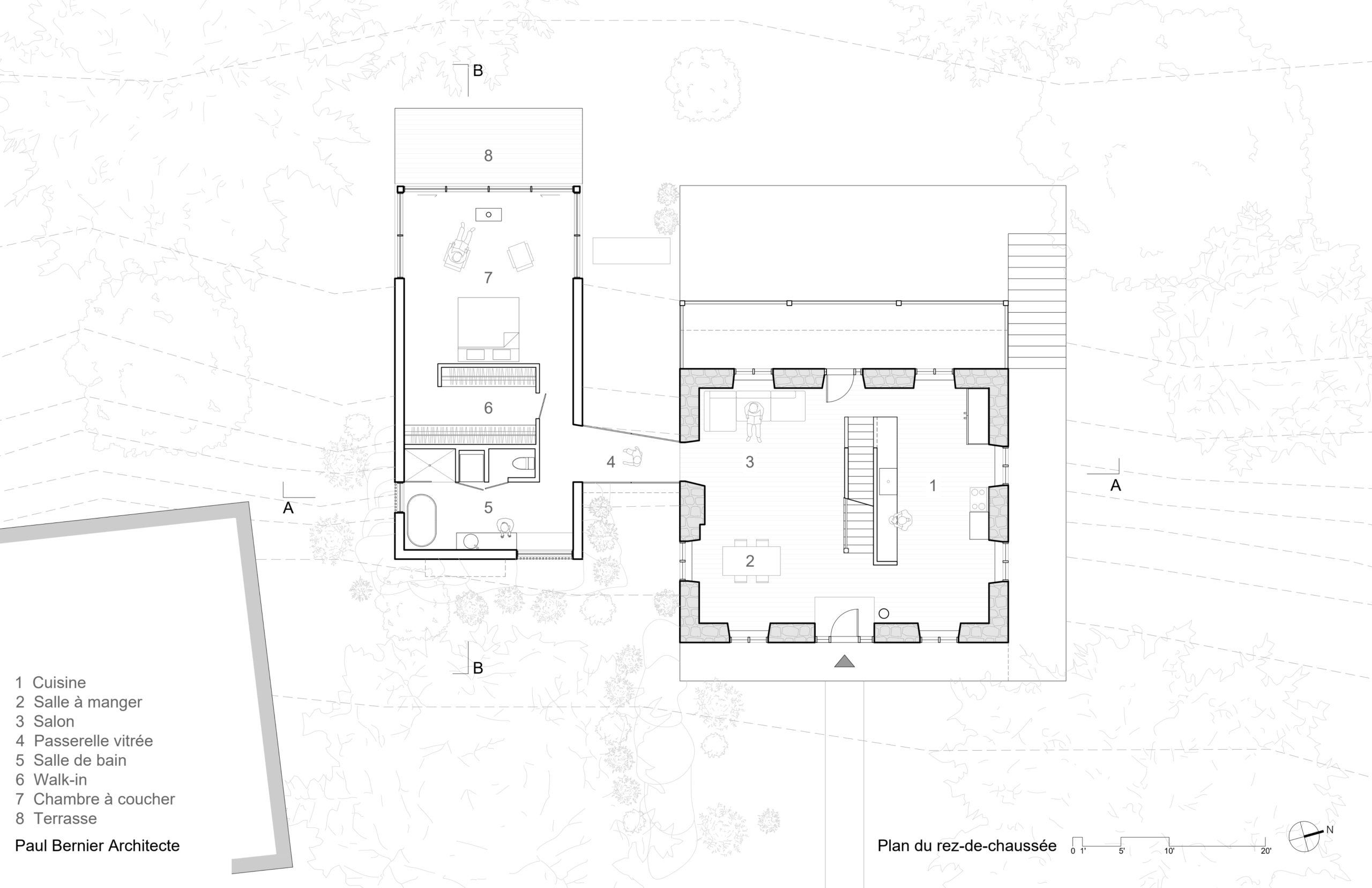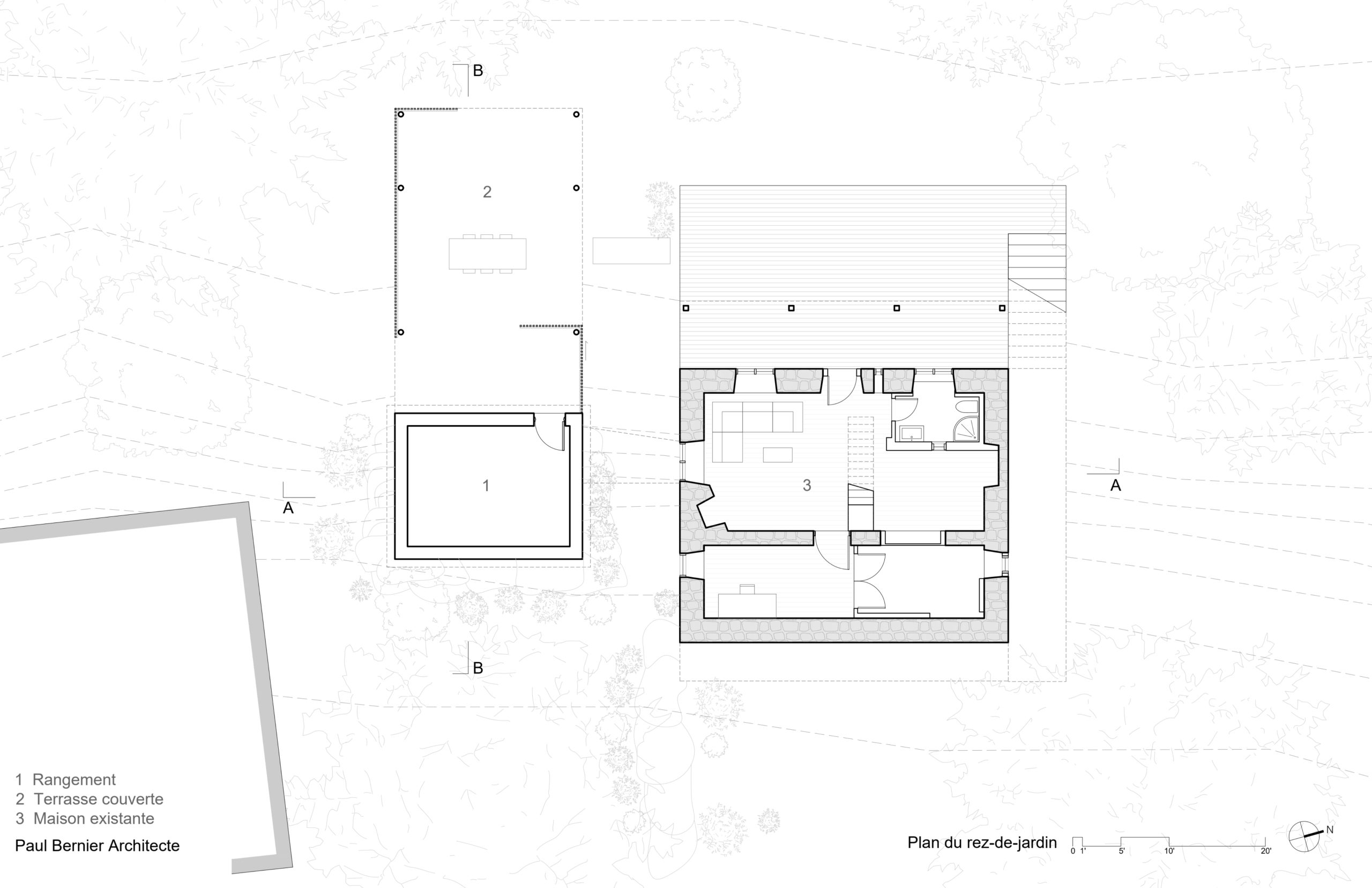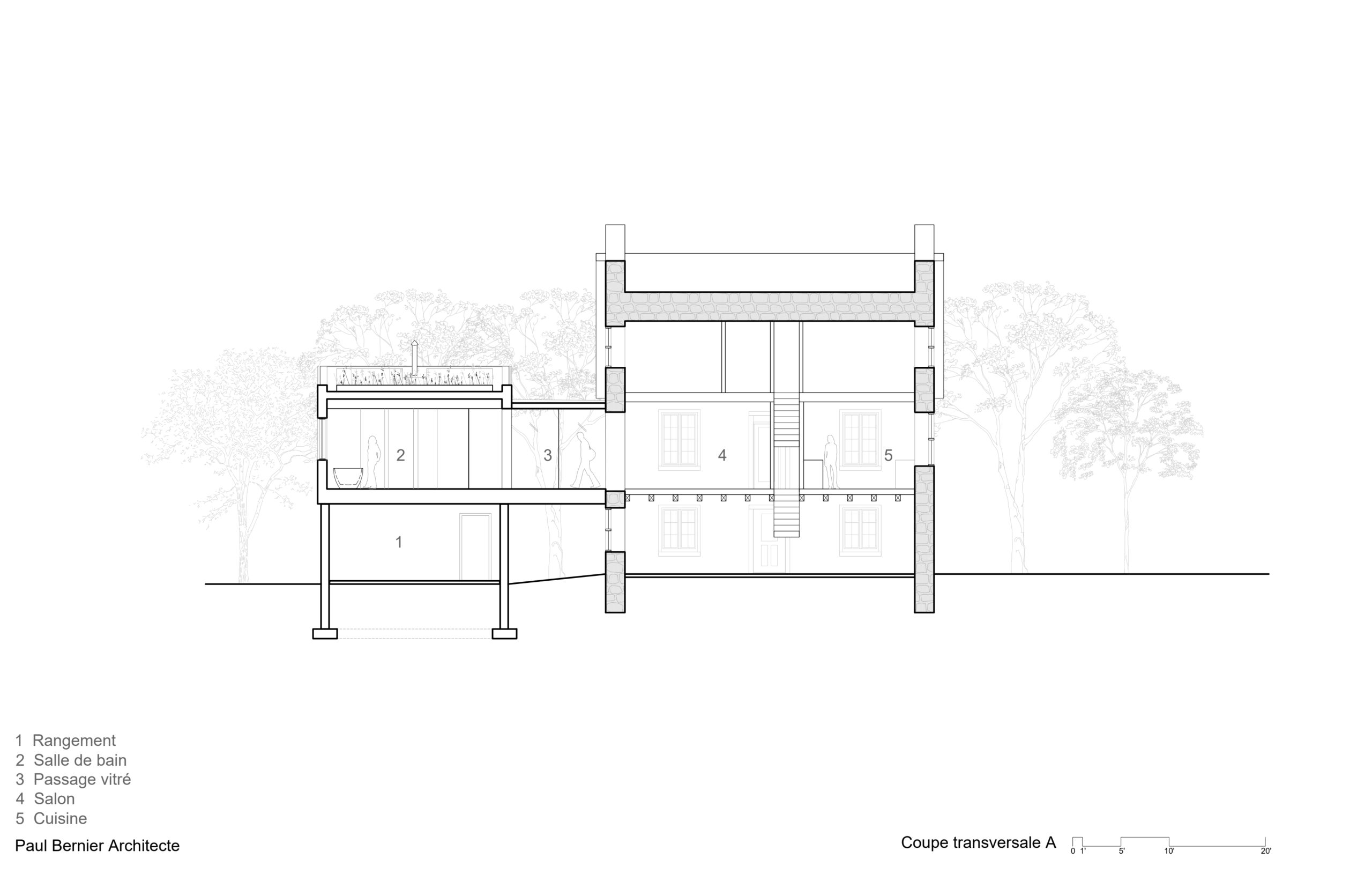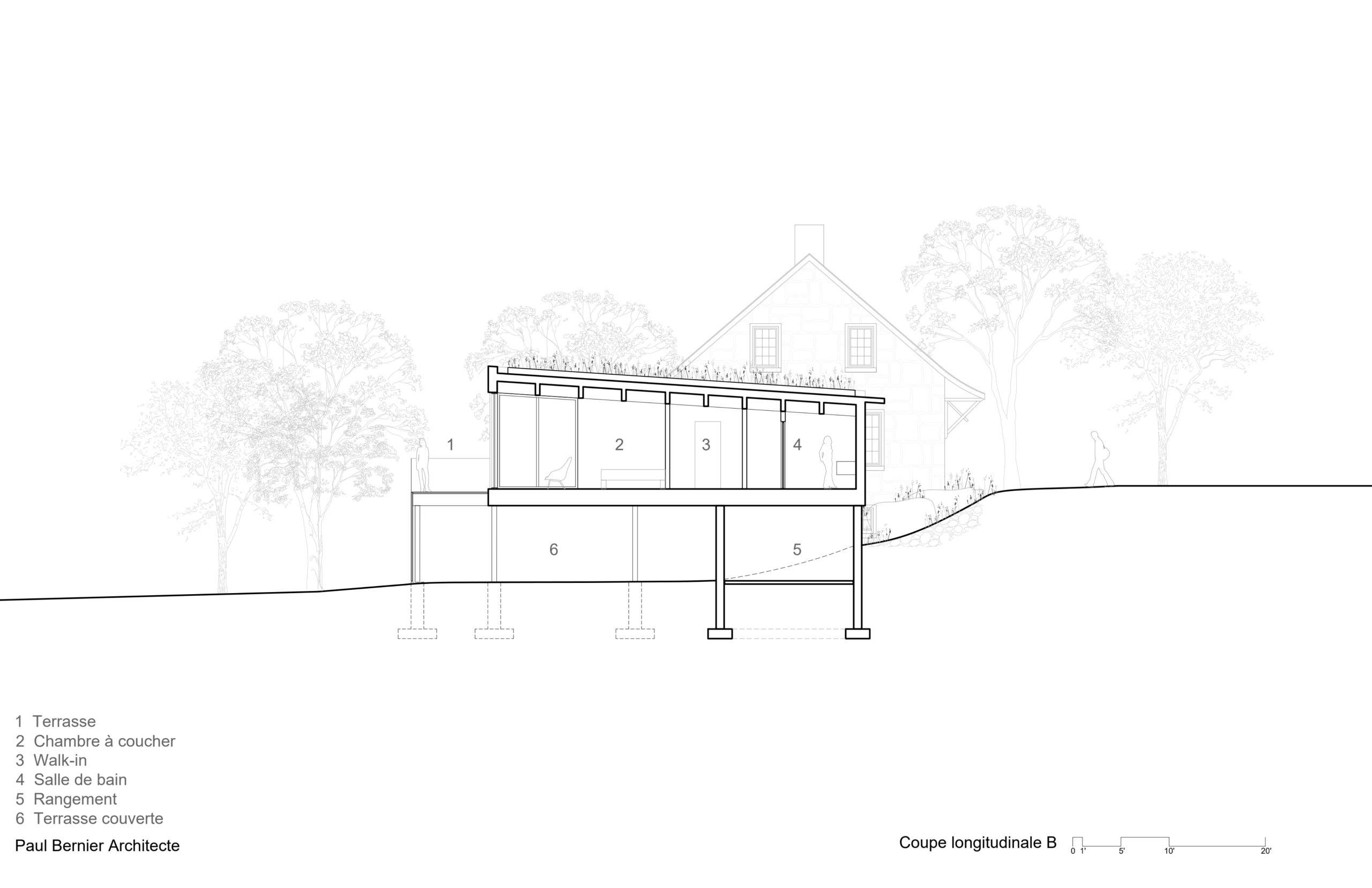Châteauguay House
Located on South Salaberry Street in Châteauguay, the project involves the renovation of a heritage building built in 1814 and the construction of a contemporary extension.
Originally a weaving workshop for the Grey Nuns religious community, the existing part is renovated from the inside to reveal its original structure and materials.
Site and Context
Situated on the riverside, the house overlooks Martineau Park from the top of a gentle slope. The strong presence of vegetation, the tranquility of the area, and the proximity to the river influence the project's character.
Relation to the Heritage House
From the street, the extension expresses itself modestly to the heritage house. The reduced width of the addition and the low slope of its roof preserve the dominance of the original house. Its offset positioning towards the back of the lot avoids obstructing the sunlight of the existing part.
A delicate glass bridge connects the two volumes while preserving the full perception of the original house from the street. Its transparency also allows a clear distinction between the two intervention periods. The weathered cedar and rough concrete covering the extension recall the gray and warm tones of the existing stone. The metallic cladding of the bridge matches the gray metal roof of the old house. Like the original house, the materials of the annex are durable, and their patina will evolve over time. Its contemporary language enhances the heritage character of the old house through contrast.
Relation to the landscape
The green roof and the outdoor landscaping interact with the landscape. Large stones are placed between the two parts of the house, resembling a stream flowing towards the river below.
On the street side, the addition sits on a concrete pedestal, while at the back, it delicately rests on thin columns to minimize the ground impact and give it an aerial aspect, overlooking the landscape.
The volume of the annex is clad in louvered vertical planks that allow air and water to pass through. These louvered slats also serve as privacy screens for the covered terrace in the backyard and in front of certain windows.
Orientations and Openings
The original house, with its thick walls and limited, deep openings, does not offer a wide, extended view of the landscape. The extension, with its generous openings, creates a distinct atmosphere while allowing good natural ventilation.
On the street side, the bathroom window is concealed behind a screen of louvered slats. In contrast, the bedroom floats above the courtyard. Through large glass doors, it opens onto a terrace offering a view of the forest and the river.
«De-renovation»
Inside the heritage house, we aimed to return to the original conditions that had been concealed by various interventions over time. Our approach aims to dissociate the existing rough and textured elements from the new, smooth, and sleek ones. Partitions are stripped to reveal the exterior stone walls. The traditional staircase is positioned in the center of the space, detached from the perimeter walls and adjacent to the kitchen. Only punctual and mobile objects are in contact with the stone. Clients describe this part of the project as a "de-renovation": highlighting the existing through subtraction rather than the addition of new elements. The basement and the upper floor are treated in the same spirit.
Journey
One enters at ground level through the original entrance, from the street side. The staircase and kitchen counter divide the open area on the ground floor into two zones: on one side the kitchen, and on the other, the living room, where the extension is connected by the glass bridge.
The atmosphere changes completely when stepping onto the bridge. For a moment, one is outside, suspended between two spaces. Both the old stone walls of the original house and the wooden slats of the new part are perceived. The flooring transitions from wood to concrete.
The extension houses the master bedroom and its suite. Under the wood beams and wood decking ceiling, a volume of concrete panels separates the space between the bedroom and the bathroom. This volume is perceived as a monolithic object placed in the middle of the plan. The angle of the bridge directs circulation towards the bedroom and provides natural privacy to the bathroom without adding a door.
Year: 2023
Team : Paul Bernier, Luc-Olivier Daigle, Evelyne St-Jacques
Structural Ingeneer : Alain Mousseau (Calculatec)
Photos : Raphaël Thibodeau

